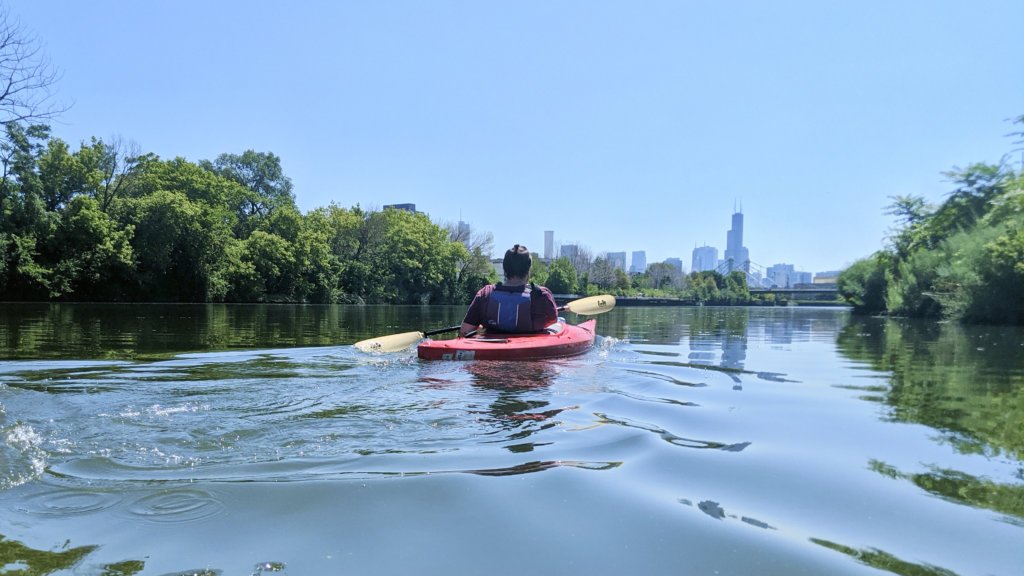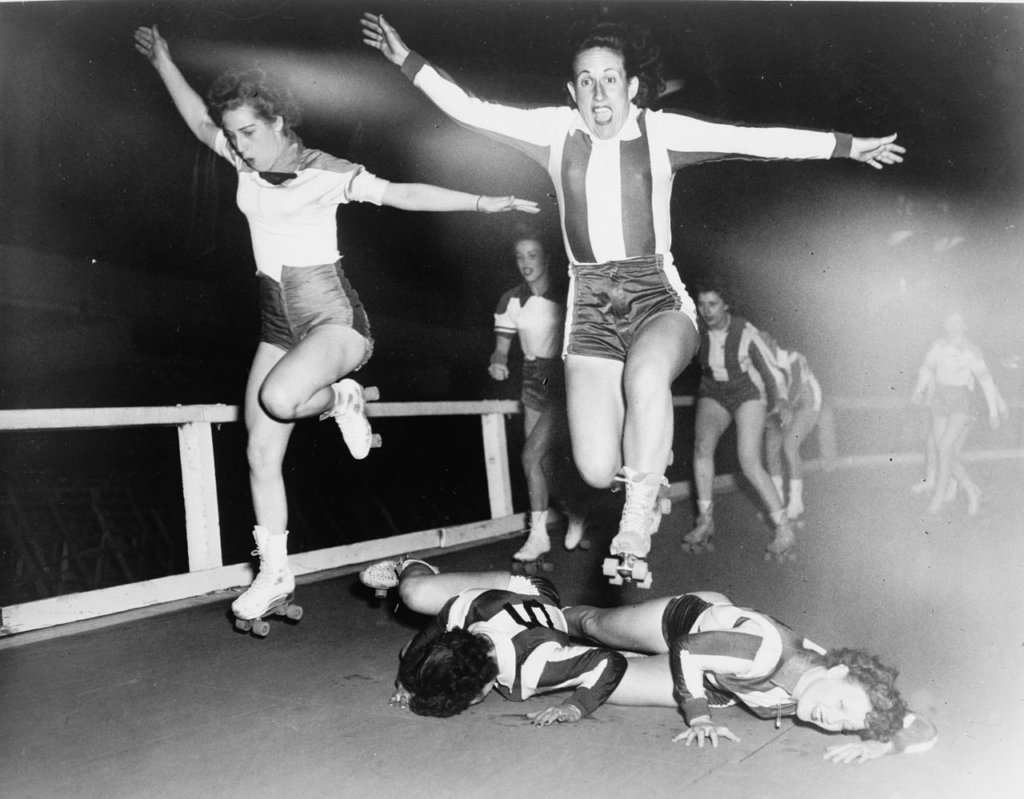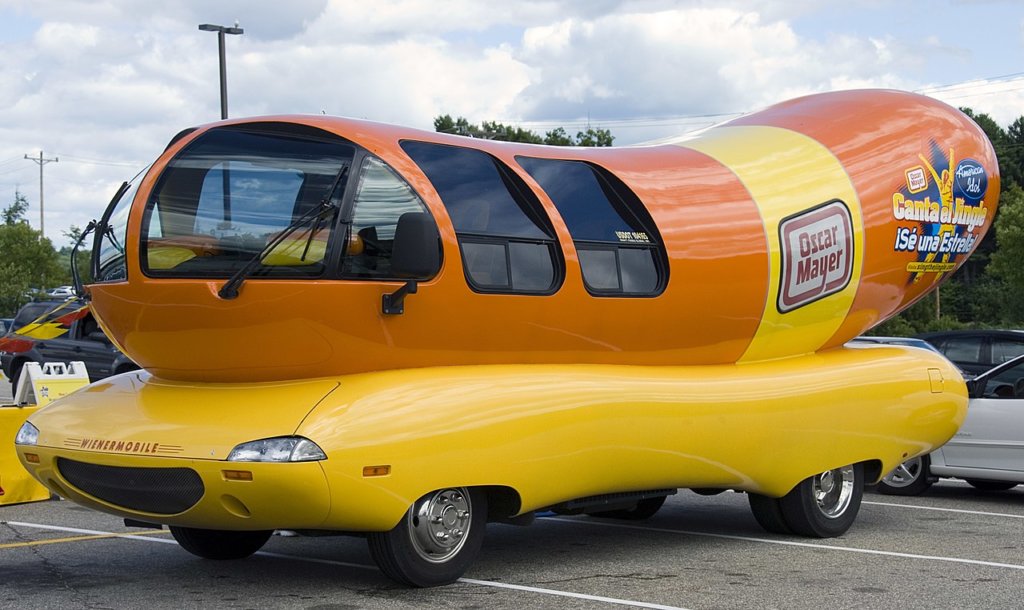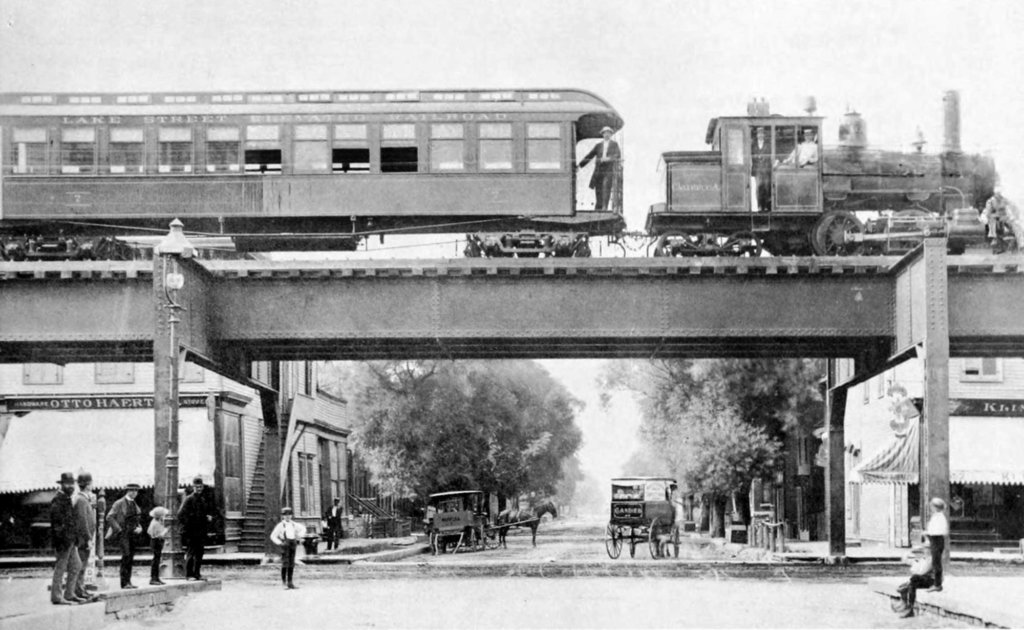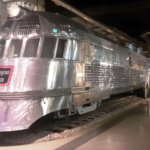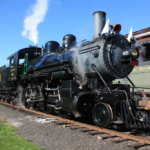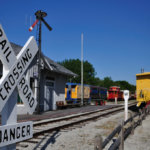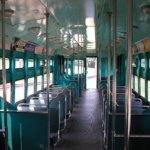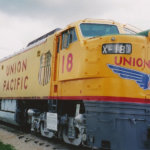Mott Street, an Asian-fusion restaurant, consistently delivers unique and flavorful dishes that keep diners coming back for more. The spacious patio and lively scene offers the perfect space for enjoying a meal in the fresh air. All types of groups can comfortably gather at large tables, making it ideal for a relaxed dining experience. Mott Street also offers brunch on the weekends and catering.
14 Outdoor Things to do in Chicago This Summer
– By Tom Schaffner
If you enjoy reading about outdoor things to do in Chicago this summer, then consider signing up for our blog newsletter!
Cold and icy weather generally forces residents and visitors to deal with two distinct Chicago seasons — the “indoor season” and the “outdoor season.” Not surprisingly, the indoor season closely aligns with the fall and winter months (October through March) and the outdoor season closely matches the spring and summer months (April through September).
A list of indoor activities in Chicago usually includes museums, sporting events (such as hockey or basketball), visiting interesting taverns and restaurants, shopping excursions, bowling lanes, indoor gardens and conservatories, gyms & fitness facilities, and much more. The outdoor season means warmer weather and endless opportunities for unique activities and outdoor things to do in Chicago. When the cold finally lets go, Chicagoans head outside in full force. Here’s how to make the most of the city’s outdoor season.
Outdoor Things to Do in Chicago
- Lincoln Park Zoo
- Take in a Ball Game
- The Lakefront Trail
- Kayak the Chicago River
- Japanese Garden
- Visit a Cemetery
- The 606
- Public Art in the Loop
- Art on the Mart
- Charter a Boat
- Chess Pavilion
- Chicago Riverwalk
- Beaches
- Navy Pier
1. Lincoln Park Zoo
Although the Lincoln Park Zoo is open 365 days a year, there’s always more to see and do during the warmer weather than during the harsh winter months. Founded in 1868, the Lincoln Park Zoo is the fourth oldest zoo in the nation and, like other zoos, allows visitors to view the animals in areas that replicate their natural habitats. If you’re looking for outdoor things to do in Chicago that involve roaming around beautiful landscaping with manicured lawns and scenic gardens all throughout a 35-acre site, then The Zoo should be at the top of your list. It is located in the heart of the Lincoln Park neighborhood. Admission is free.
2. Take in a Ball Game
Warmer weather means baseball in Chicago, and both Chicago baseball teams –the Cubs and the White Sox– are once again welcoming fans to the ballpark for another exciting season. While season ticket holders still get early access, plenty of seats are available to the general public and can be easily purchased online. I don’t know about you, but there’s nothing quite like the crack of the bat, a cold beer in one hand, and a hot dog in the other. It just feels like summer in Chicago.
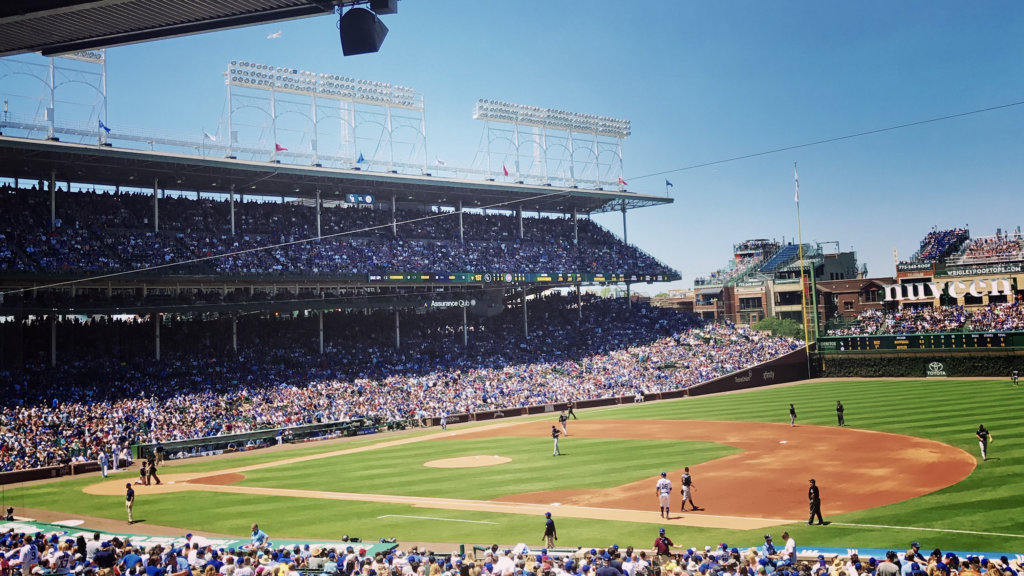
3. The Lakefront Trail
Walk, run, bike, or rollerblade Chicago’s magnificent Lakefront Trail, which stretches for 18 wonderfully scenic miles and offers a variety of outdoor things to do in Chicago all in one place. Along the way, you’ll pass parks, the Museum Campus, Soldier Field, McCormick Place, many views and perspectives of Chicago’s skyline, the South Shore Cultural Center, and many more sites and attractions. Because there is so much to see and do on the Lakefront Trail, many locals insist that traveling this unique path is like taking a “stay-cation” in Chicago.
4. Kayak the Chicago River
Natives and early explorers of Chicago traveled by canoe on the North and South Branches of the Chicago River to reach what would later be called Lake Michigan. You can do the same at various locations along the River with guided tours that depart during all hours of the day, for nighttime sails, and even trips that are timed to coincide with special events that take place in the city, such as the weekly fireworks show at Navy Pier.
5. Japanese Garden
Located in Jackson Park just south of the Museum of Science and Industry is a Japanese garden sometimes referred to as the “Garden of the Phoenix” or the “Osaka Garden,” (Osaka is a sister city of Chicago). The garden was a gift to Chicago from Japan in honor of the World’s Columbian Exposition (1893) which was held in Jackson Park. The blossoming of the cherry trees in spring is an annual highlight of the park, however, the entire garden is beautifully landscaped and located on a secluded island in the park.
6. Visit a Cemetery
This might not be on everyone’s list of outdoor things to do in Chicago, however, cemeteries are quiet, peaceful, landscaped, and are the final resting spot for notable Chicagoans, many of who have beautiful gravestones and mausoleums that adorn their tombs. On the North Side, visit Graceland Cemetery where Daniel Burnham, Ernie Banks, Roger Ebert, Marshall Field, William Le Baron Jenney, Joseph Medill, Ludwig Mies Van der Rohe, Ruth Page, George Pullman, and many other famous people are buried. On the South Side, visit Oak Woods Cemetery, the final resting spot for Cap Anson, Enrico Fermi, John H. Johnson, Jesse Owens, William Hale Thompson, Harold Washington, Ida B. Wells, and Bill Veeck.
7. The 606
The 606 is an abandoned 2.5-mile railroad line that has been converted into an elevated trail/park that runs parallel to North Ave. on the north side of the city from Ashland Ave. on the east to Ridgeway Ave. on the west. Perfect for joggers, walkers and bikers, the trail is clean, well-maintained and also has a number of interesting bars, restaurants and shops that can be visited along the way. The trail takes its numeric name from the first three digits of all Chicago zip codes.
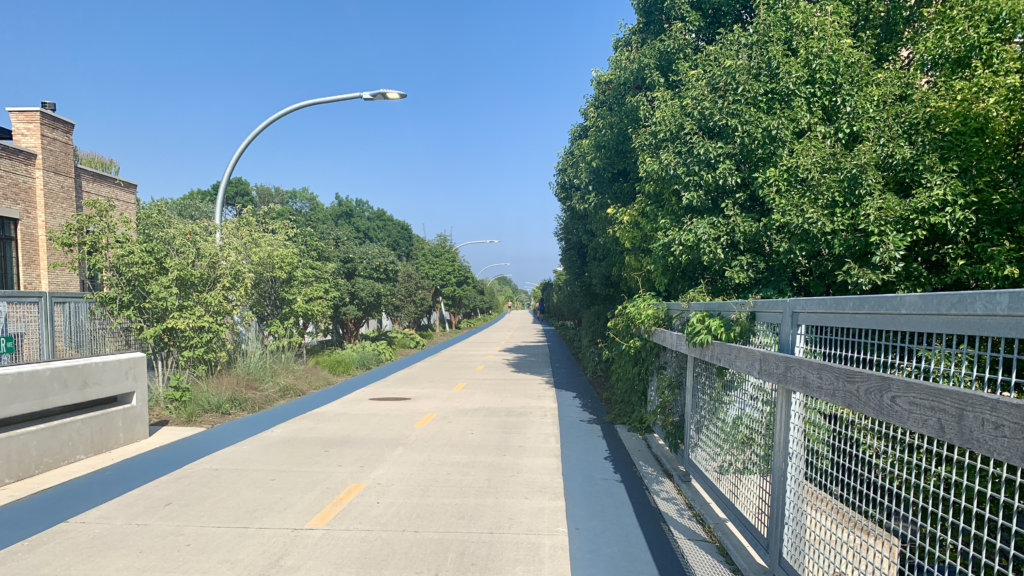
8. Public Art in the Loop
Chicago’s Loop is a veritable gallery of public art featuring works from some of the most famous artists in the world, including Picasso, Calder, Miro, Dubuffet, Chagall, and many more. The most notable (and famous) works are all within a short walk of one another and can easily be found online.
9. Art on the Mart
This innovative digital presentation uses the broad front face of the Merchandise Mart (the side of the building that faces the Chicago River) as a screen to display projected art in nightly “programs” that begin at 8:30 p.m. and 9 p.m. Best spot to view the presentation is from the south bank of the Chicago Riverwalk between Wells and Lake Streets. For those looking for outdoor things to do in Chicago that are truly unique to our city, then this should be on your list!
10. Charter a Boat
There’s an awfully big body of water located on Chicago’s eastern border — why not charter a boat and do some sightseeing, fishing, sun-worshipping or celebrate a special occasion (and let the crew do all of the work)? There are plenty of charter boats in the Chicago area, your next trip is only a few clicks away.
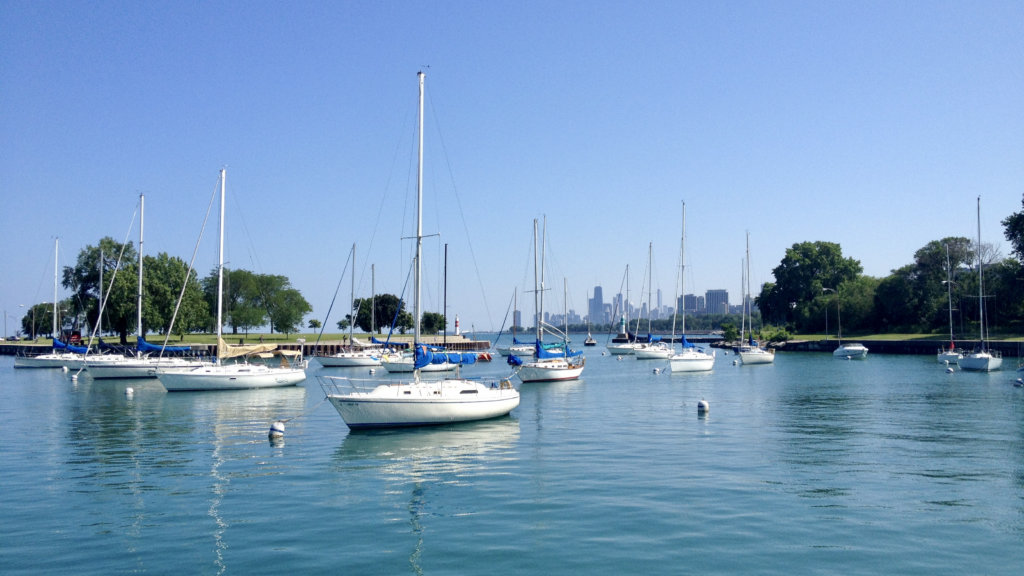
11. Chess Pavilion
If you enjoy playing chess — or enjoy watching others play it — the place to add to your list of outdoor things to do in Chicago is the beautifully designed outdoor chess pavilion located just south of North Avenue Beach in the Lincoln Park neighborhood (just off the Lakefront Trail). The Chess Pavilion structure has chessboards carved into it and they are sheltered from the elements by a wing-like overhang. The structure, built in 1957, also features carvings of chess pieces as well as sculptures of free-standing pieces.
12. Chicago Riverwalk
Located on the south bank of the Chicago River between the lakefront and Lake Street, the Riverwalk is Chicago’s version of the Boardwalk in Atlantic City, it has something for everyone. In addition to enjoying a leisurely stroll along a picturesque river, you can visit outdoor restaurants and taverns, museums, do a little fishing, take boat trips, try your hand at kayaking, view public art, and even do a little bird watching.
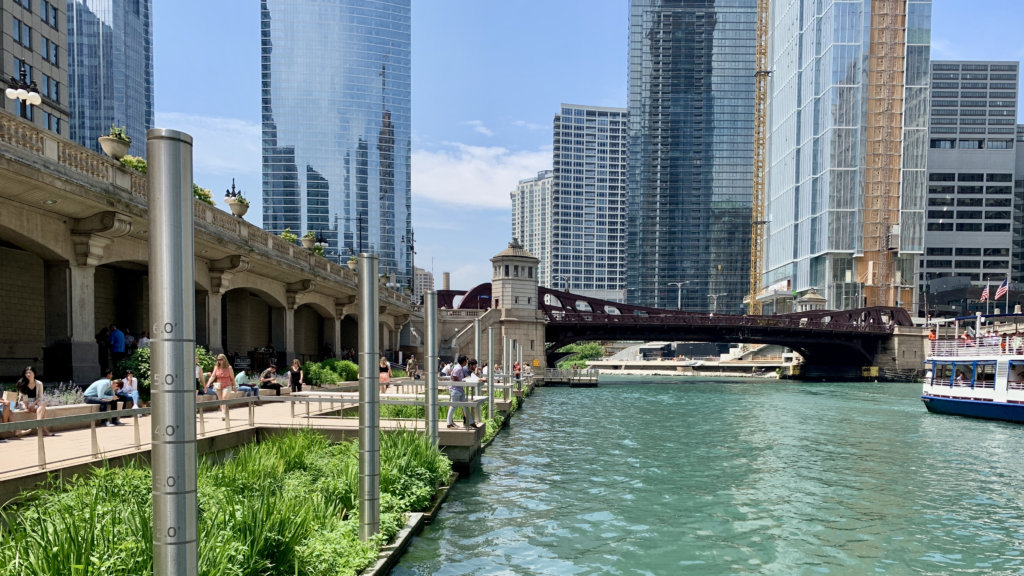
13. Beaches
Chicago’s 26-mile lakefront is one of the city’s greatest treasures and it’s as lively as ever. From biking and strolling the Lakefront Trail to swimming, sunbathing, or picnicking along the shore, there’s no shortage of ways to enjoy the water. With more than two dozen beaches open to the public, you’ll find everything from peaceful stretches of sand to bustling scenes near volleyball courts and beachside cafes. Whether you’re catching sunrise at Montrose or people-watching at North Avenue, Chicago’s beaches are the perfect place to soak up summer.
14. Navy Pier
Buzzing with activity, Navy Pier continues to be one of Chicago’s top lakefront destinations. With year-round attractions, you can enjoy everything from boat rides and waterfront dining to shopping, museums, and live performances. Weekly fireworks light up the skyline every Saturday night at 9 p.m., offering the perfect end to a summer evening. Whether you’re visiting with family or soaking in the views with friends, Navy Pier remains a must-see stop on the city’s lakefront.
Holder of two journalism degrees, including a masters from Northwestern University, Tom Schaffner is a native of the Chicago area and has spent nearly 50 years as a writer, editor, publisher and professional communications consultant. He was also the founder, editor, and publisher of the Chicago File, as well as the co-owner of L Stop Tours.
– By Tom Schaffner
A few years ago, the Chicago Tribune asked its readers to select the “Seven Wonders of Chicago” from a list of nominations the newspaper had compiled. Chicago’s elevated transit system — the L — was selected number three, just behind the Lakefront and Wrigley Field.
Not bad for a transportation system that was built in 1892 and has more liver spots and face wrinkles than your great grandparents.
Chicago’s L is more than just a public transportation system that efficiently moves people throughout the city. It’s an iconic symbol of Chicago, an elevated railway that has rattled and clattered unabashedly into the hearts and minds of locals and visitors worldwide for well over a century.
Because the L is so ingrained in the everyday fabric of our being, we have put together a list of interesting facts and tidbits that reinforce the idea that our rapid transit system is indeed a true wonder of Chicago.
1. Wrigley Flag Communication
In 1937, the Chicago Cubs renovated their scoreboard and decided to incorporate a system for communicating the day’s baseball results to L riders who were whizzing past the ballpark on a train. If a light-colored flag with a “W” flew, the Cubs had won the game that day; if a darker flag with an “L” was at the top of the staff, it meant the Cubs had lost another one. The flags are still in use today although they have become largely ceremonial, thanks to smartphones and other communication devices.
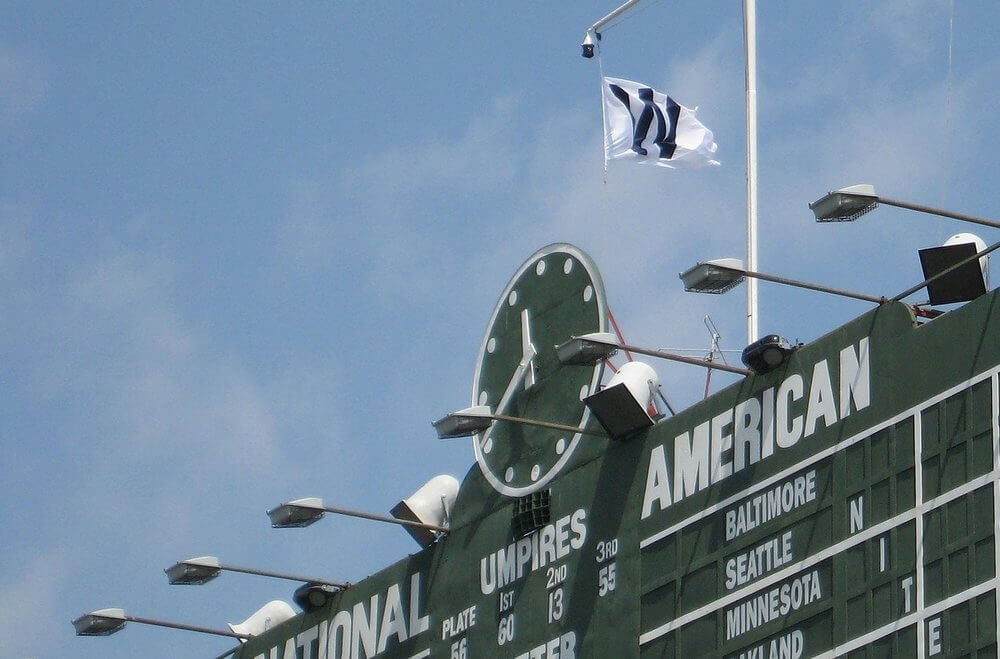
2. A Double Double-header
Chicago is one of the few cities in the word that has rail service to two major airports — O’Hare Field (Blue Line) and Midway Airport (Orange Line). Similarly, the CTA’s Red Line connects both of the city’s major league baseball stadiums — Wrigley Field for the Cubs (Addison Street stop) and Guaranteed Rate Field for the White Sox (35th Street stop). If these teams ever meet in the World Series, it won’t be a subway series, it’ll be a Red Line Series, two teams separated by 13 L stops.
3. Another Reason We’re the Second City
With 1,492 rail cars operating on eight routes and carrying an average of 752,734 passengers each weekday (239 million passengers per year), Chicago’s rapid transit system is the second-largest and second-busiest mass transit system in the U.S. Only the New York City transit system is larger and busier.
4. Not Much to Look at But Fast
On May 1892, Chicago’s first elevated train, four wooden coaches pulled by a steam locomotive, took its inaugural trip down the Southside Rapid Transit Railroad Company’s “Alley L” from Congress St. to 39th. Chicagoans thought the elevated structure was unsightly, but they liked its speed — 34 blocks in just over nine minutes.
5. How Downtown Got Its Name
Downtown Chicago is called the Loop because the elevated tracks create a loop around a rectangle formed by Lake Street (north), Wabash Avenue (east), Van Buren Street (south), and Wells Street (west). The looped track structure was created when four independently owned transit companies decided to cooperate with one another in simplifying the delivery of passengers to downtown Chicago. What they created was called the “Union Loop.” This simple invention created a legendary moniker for the city that is now known worldwide.
6. Win, Place, Show
As of 2018, the Red, Blue, and Brown Lines were the busiest train lines in Chicago, with the Red Line carrying over 225,000 passengers on an average weekday, the Blue Line with nearly 150,000, and the Brown Line with approximately 40,000 daily passengers. While ridership has been recovering since recent disruptions, it has yet to return to pre-pandemic levels. While ridership is bouncing back, it still hasn’t quite reached pre-pandemic levels. Even so, these lines are still the heart of the city’s transit system, getting people where they need to go every day.
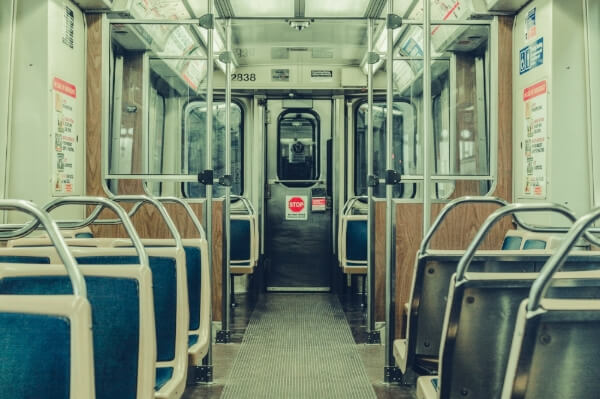
Oscar-Worthy Performances
Because nothing screams “Chicago” like an L train passing skyscrapers in the Loop, the L has been featured prominently in a number of motion pictures and television shows, including Shameless, The Blues Brothers, Risky Business, and Planes, Trains and Automobiles.
The Future is Now
Constantly changing demographics throughout the metropolitan area make it necessary for CTA officials to stay ahead of the curve and invest in tomorrow’s successful projects today. Among the projects currently underway are an expansion of the Red Line to 130th Street, station modernization and speed improvements along the Blue Line, capacity increases on the Brown Line (longer train platforms for longer trains) and a recent announcement that the City hopes to build a high speed transit system (100 m.p.h) in a tunnel between the Loop and O’Hare Airport.
As our name implies, L Stop Tours uses the L Train for all of our full tours. To fully experience the L Train, consider booking one of our tours today!
Holder of two journalism degrees, including a masters from Northwestern University, Tom Schaffner is a native of the Chicago area and has spent nearly 50 years as a writer, editor, publisher and professional communications consultant. He was also the founder, editor, and publisher of the Chicago File, a newsletter for former Chicagoans. Tom is also the co-owner of L Stop Tours.
If you enjoy reading about our picks for the best outdoor dining in Chicago, then visit our blog to get more insightful facts, recommendations and history about Chicago.
– By Lindsay McNaught
What’s not to love about summer in Chicago? As the weather warms up, the city comes alive with iconic neighborhood staples offering inviting outdoor patios perfect for soaking up the sun. Whether it’s a classic rooftop bar, a cozy beer garden, or a laid-back restaurant patio, these spots are the perfect places to enjoy great food, refreshing drinks, and the best of summer vibes. With the city’s vibrant outdoor dining scene, there’s no shortage of places to enjoy the sunshine and a delicious meal with friends.
Check out our top picks for outdoor dining in Chicago:
- 5 Rabanitos
- Chef’s Special Cocktail Bar
- Frontier
- Green Street Smoked Meats
- Duck Inn
- Mott Street
- Big Star
- Parson’s Chicken & Fish
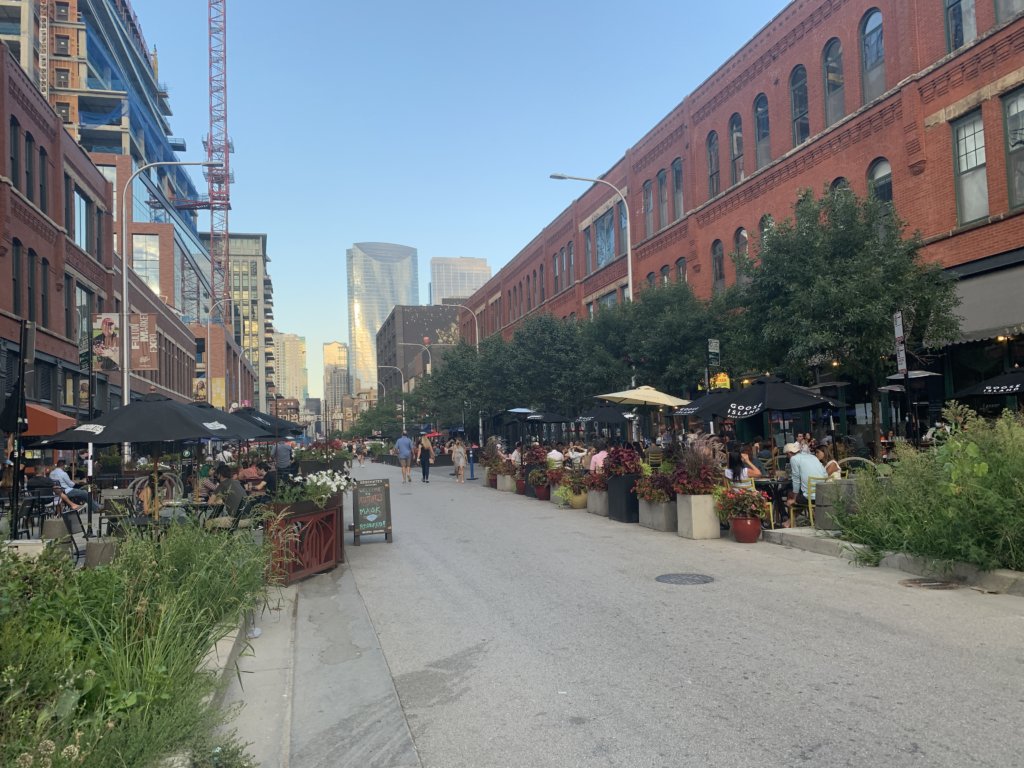
With more and more restaurants reopening and offering outdoor dining in Chicago, the city’s sidewalks are bursting with activity once again. But with so many delicious options, which do you choose? Here are eight of our team’s favorite restaurants that feature dining al fresco:
1. 5 Rabanitos
As far as outdoor dining in Chicago goes, 5 Rabanitos is hard to beat. Just steps from the 18th Street Pink Line Stop, this Pilsen eatery serves authentic Mexican cuisine at lunch and dinner. The restaurant’s patio on Wood Street sits just across the sidewalk from a beautiful mural painted on the building’s exterior.
2. Chef’s Special Cocktail Bar
The menu features well-crafted cocktails and delicious Chinese cuisine from the team behind Giant. For those looking for outdoor dining in Chicago that involves eating spicy Chinese food and specialty cocktails, then Chef’s Special is your spot.
3. Frontier
Serving up Southern comfort food, whole animals and large format meals, Frontier certainly offers a dining experience not found at other Chicago restaurants. Frontier is a Black-owned business and a James Beard Award Semi-Finalist. This same team also runs Ina Mae Tavern & Packed Goods, another Wicker Park restaurant serving New Orleans-inspired dishes with outdoor seating.
4. Green Street Smoked Meats
Green Street is located down a brick, paved alley in the heart of the West Loop and also has a spacious indoor seating area with a full bar. Their smoked meats, sides, and cocktail offerings are amazing — you can’t go wrong with anything on the menu.
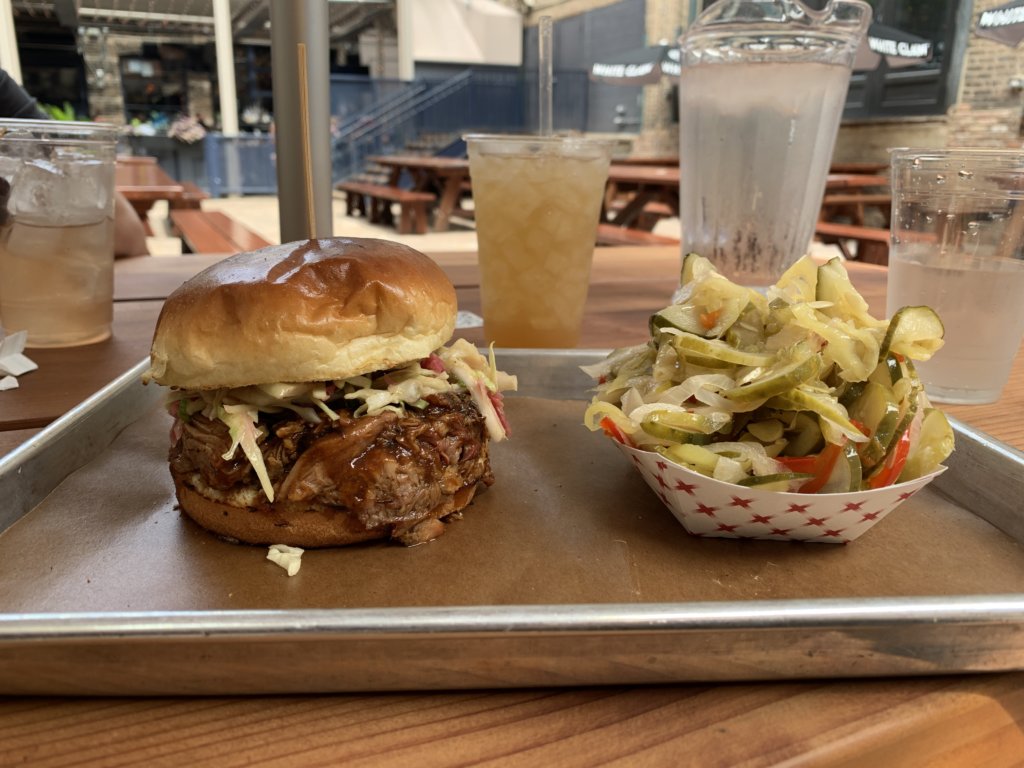
5. Duck Inn
Tucked between Pilsen and Bridgeport, this cozy tavern has a quaint patio and delicious food. Their specialties are rotisserie duck and Duck Inn dogs – their take on a classic Chicago hot dog. Both are excellent choices, depending on what you’re in the mood for. You can also find Duck Inn Dogs at TimeOut Market.
6. Mott Street
7. Big Star
Big Star in Wicker Park remains a favorite among locals, and it’s no surprise why—it’s the original location and a beloved spot. They also have locations in Wrigleyville and West Town. Whether you’re enjoying a refreshing margarita on a sunny day or indulging in their tasty tacos, it’s a perfect spot to unwind. Plus, dogs are welcome (on leashes, of course) to join the fun. Big Star also has a convenient to-go window at the Wicker Park location, making it easy to grab your favorite dishes and enjoy them wherever you like.
8. Parson’s Chicken & Fish
All three Parson’s locations feature spacious patios with large picnic tables, perfect for enjoying delicious comfort food like fried chicken, hushpuppies, and mac and cheese. And the best part? Dogs are welcome on the patios, so bring your furry friend along to enjoy the vibes. While Parson’s delivers if you prefer to dine at home, the food is just as amazing wherever you enjoy it—whether you’re lounging on the patio or relaxing on the couch. We’ve ordered plenty of hot chicken sandwiches over the years, and they’re always a hit!
Let’s continue to support our community and enjoy outdoor dining in Chicago while the weather cooperates.
– By Tom Schaffner
For more stories about Chicago’s fascinating history, take a look at what Chicago city tours we are currently running! L Stop Tours runs unique tours all across Chicago’s neighborhoods that are guided by lifelong Chicago residents. Discover the amazing architecture, tasty food, and interesting tidbits about the city in one of our Chicago walking tours!
Although Chicago is commonly known as the “Second City,” it’s equally known as a city of “firsts.”
Unfortunately, we’re not referring to the success of local sports franchises. The “firsts” that we’re talking about are things that were invented in Chicago or the metropolitan area. Many of these inventions are celebrated widely in the media — the Ferris Wheel (1893 World’s Fair), deep dish pizza (Pizzeria Uno in 1943), the brownie (Bertha Palmer and the Palmer House, 1893), the world’s first modern skyscraper (Home Insurance Building, 1888) and Playboy magazine (Hugh Hefner, 1953).
Many of Chicago’s other firsts, however, are not as well known. So, in our never-ending quest to shed a spotlight on all things Chicago, we’ve compiled a list of lesser-known Chicago inventions or “firsts.” Here they are in no particular order:
Blood Bank
After observing the difficulties experienced by World War I soldiers who needed a certain blood type for a transfusion, Bernard Fantus, a Chicago physician came up with a better idea. He developed a method of blood preservation and storage that allowed patients to access blood without waiting for a donor. The nation’s first blood bank opened at Cook County Hospital in 1937.
Spray Paint
Although aerosol cans had been around for years, no one ever thought to fill the can with paint. In 1947, suburban Chicago resident Edward Seymour, at the suggestion of his wife, Bonnie, filled an aerosol can with aluminum-colored paint and pressed the button. The result was not only a smooth, evenly-coated painted surface, Seymour realized that he had now made painting easier and portable. Spray paint was an instant commercial success. In 1992, the Chicago City Council banned the sale of spray paint in an effort to crack down on graffiti.

Sleeping Cars on Trains
After a long, restless night on a train in 1862, George Pullman, a Chicago mechanical engineer, had the idea to create a luxury sleeping car for trains. The “Pioneer,” as he called it, had rubberized springs that reduced shaking, its walls consisted of dark walnut and the seats were covered with plush velvet. Silk window shades, crystal chandeliers and brass fixtures added to the overall feeling of luxury. At night, the seats unfolded into lower sleeping berths and an upper berth dropped down from a cabinet in the ceiling. To mass produce the railcars, Pullman created the Pullman Palace Car Company (on Chicago’s far South Side), which was responsible for other rail innovations like the dining car, the lounge car and the covered vestibule between passenger rail cars.
Car Radio
The first commercially successful car radio was designed and built in 1930 by Chicago’s Galvin Manufacturing Company. When the stock market crashed in 1929, Paul Galvin noticed that radios sales were down but car sales remained steady— owning a vehicle was still important to consumers, even in a poor economy. Galvin found a way to mount a radio in his Studebaker and drove it 815 miles to Atlantic City where the 1930 Radio Manufacturers Association Convention was being held. Upon arrival, he parked the car at the base of the pier and turned up the volume. The radio was a big hit, so Galvin returned to Chicago to begin manufacturing his product. On the way home he decided to give his product and company a new name — Motorola — a combination of “motor car” and “Victrola.”
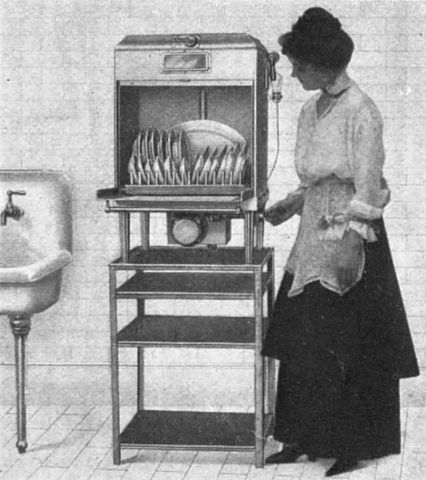 Automatic Dishwasher
Automatic Dishwasher
Josephine Garis Cochran did not like having to hand wash dishes after entertaining friends and relatives at her home. She is claimed to have said, “If nobody else is going to invent a dishwashing machine, I’ll do it myself.” She partnered with a mechanic, George Butters, and created a machine that she showed at the World’s Columbian Exhibition in Chicago (1893). In addition to winning an award for its mechanical prowess and durability, it attracted considerable interest from restaurants and hotels, both of which saw the machine as a great way to become more efficient. Cochran’s Crescent Washing Machine Company became part of KitchenAid in 1913 through an acquisition by Hobart Manufacturing Company.
Soap Opera
After working as a staff writer at WGN in Chicago, former teacher Irna Phillips created a serialized daily program geared toward women, “Painted Dreams,” which was about a widowed matriarch of a large Irish-American family. The year was 1930, the medium was radio and the program aired for two years on WGN. Because her show often was sponsored by soap manufacturers, it became known as a soap opera. Prolific in her writing, Phillips also created other soap operas that aired on radio and television, including “Guiding Light,” “As the World Turns,” “Another World” and “Love is a Many Splendored Thing.”
Roller Derby
Though roller skates were first introduced in London in 1735, the sport of Roller Derby was invented in 1935 by a Chicagoan, Leo Seltzer, an entrepreneur who was responsible for booking events at the old Chicago Coliseum just south of the Loop. For two years, the Coliseum hosted the “Transcontinental Roller Derby,” a multi-week event in which teams of skaters raced against one another on “trips” (miles that were tracked and plotted daily on maps) between large American cities, like Chicago to San Diego or New York to Salt Lake City. In 1937, Seltzer changed the rules to make the sport more exciting. Instead of long-distance races, teams scored points by breaking through and passing players on the opposing team. At 10 cents per ticket, Roller Derby was by far the cheapest sports ticket in town, an important consideration for those looking for an escape from the hardships of the Great Depression and a main driver of the sport’s rapid growth.
Vacuum Cleaner
Although a carpet-sweeping device was introduced a few years earlier, the first manually-powered vacuum cleaner was invented in 1869 by Chicago inventor Ives W. McGaffey. Though it required a certain amount of athleticism to operate (you had to turn a hand crank while pushing the device across the floor), the machines were commercially successful and sold for $25 apiece. The Great Chicago Fire of 1871 destroyed McGaffey’s inventory, however, one of his original models currently resides at the Hoover Historical Center in North Canton, Ohio.
Farm Silo
In ancient Greece, farmers stored grain in huge pits in the ground. In fact, the word silo is derived from Greek meaning, “pit for holding grain.” In 1873, Fred Hatch of McHenry County, Illinois thought there had to be a better way. He built an above-ground “pit” with round walls made of wood — a structure that generally is acknowledged as the first modern silo. It was successful, too. The new silo on his farm was filled with green corn fodder, so much so that Hatch’s cows stayed fatter and gave more milk than they ever had before.
Chicken Vesuvio
No one is quite sure about the origin of this popular dish but many have suggested that it first appeared on the menu of Vesuvio Restaurant, 15 E. Wacker Drive, Chicago, in the early 1930s. Served with potato wedges, this dish features a half chicken that is sautéed with garlic, oregano, white wine, lemon juice and olive oil. Though the restaurant has long since faded into the darkness, the recipe lives on in a number of Italian restaurants throughout the Chicago area.

Mobile Phone
Building on his company’s earlier success with the car radio, color television and two-way walkie-talkies, Martin Cooper, an engineer at Motorola, produced the world’s first handheld mobile phone in April 1973 in Schaumburg, Illinois. In 1983, the company launched its first retail mobile phone — the DynaTAC 8,000X. The handset (a phone only, not a smartphone!) offered 30 minutes of talk time, six hours of standby and could store 30 phone numbers. Its price, $3,995, was a little prohibitive by today’s standards.
The Wienermobile
In 1936, when Oscar Mayer Company was headquartered in Chicago, Carl Mayer, nephew of company founder Oscar, had an idea — a 13-foot-long hotdog mounted on a car that would travel the streets of Chicago promoting the company’s iconic brand. General Body Company of Chicago designed the first Wienermobile, which featured open cockpits in the center and rear of the vehicle. Today, a number of vehicles comprise the Wienermobile “fleet,” all of which can serve fully prepared Oscar Mayer hotdogs on location. The fleet consists of the full-size Wienermobile, a Mini Wienermobile (a hotdog on the body of a Mini Cooper), a motorcycle with a hot dog sidecar, and the Wiener Rover and the Wiener Drone, two remote-controlled hotdog delivery vehicles.
Twinkies
Twinkies were invented in Schiller Park, Illinois on April 6, 1930 by James Dewar, a baker at Continental Baking Company. When Dewar saw machines used to make filling for strawberry shortcakes idled when strawberries were out of season, he came up with the idea to develop a snack cake filled with banana cream to increase the machines’ utilization. A co-worker called the product a “Twinkie” after having seen a nearby billboard advertising “Twinkle Toe Shoes.” When World War II caused bananas to be rationed, the company switched the filling to vanilla, which proved to be even more popular than the original.
Zipper
A Chicagoan, Whitcomb Judson, is generally credited with inventing the first clothing fastener in 1891. Used mainly on shoes and boots, the device utilized a chain-lock mechanism that held leather together without separating. In 1893, Judson exhibited his invention at the Chicago World’s Fair. The device enthralled fairgoers, leading him to launch the Universal Fastener Company in Chicago to manufacture his product. The chain-lock device never achieved commercial success, however, the clasping device was used by Judson and other inventors as a springboard to create new and improved fasteners that closely resemble the “zipper” that is commonly used today.
Interested in the World’s Fair of 1893? We recommend a classic Chicago tale, The Devil in the White City. As an Amazon Associate, we earn from qualifying purchases.
Holder of two journalism degrees, including a masters from Northwestern University, Tom Schaffner is a native of the Chicago area and has spent nearly 50 years as a writer, editor, publisher and professional communications consultant. He was also the founder, editor, and publisher of the Chicago File, a newsletter for former Chicagoans. Tom is also the co-owner of L Stop Tours.
– By Tom Schaffner
For more stories about Chicago’s fascinating history, take a look at what Chicago city tours we are currently running! L Stop Tours runs unique tours all across Chicago’s neighborhoods that are guided by lifelong Chicago residents. Discover the amazing architecture, tasty food, and interesting tidbits about the city in one of our Chicago walking tours!
As a civilization, the Roman Empire lasted for 1,000 years. In 2025, Chicago will celebrate the 188th anniversary of its founding.
Like Rome, Chicago has created a number of important structures and monuments that not only have enjoyed tremendous success over the years but have survived and withstood the test of time. They are stable and popular structures and institutions…none are likely to disappear any time soon. Wrigley Field, the L, the Art Institute, O’Hare Field and McCormick Place are a few examples that come to mind.
On the other hand, Chicago also is home to a great number of municipal “dinosaurs” — well-known buildings, institutions and other local treasures that, thanks to a rapidly changing world, have suddenly become outdated, irrelevant and, possibly, unneeded in the future. Like the dinosaurs of era past, these local treasures are endangered species and may soon become extinct.
L Stop Tours has put together a list of Chicago “dinosaurs” for your consideration:
- U.S. Post Office Loop Station
- Chicago Board of Trade
- Harold Library Washington Center
- Macy’s (on State Street)
- Solider Field
- Manually Operated Elevators
- South Shore Line
- Greektown
- 16-Inch Softball
- Chicago Beaches
- Nonmultiplex Movie Theaters
1. U.S. Post Office Loop Station
211 S. Clark
In a day and age when wireless communication is omnipresent, do we really need an over-large U.S. Postal Service building to handle an ever-dwindling amount of U.S. mail? The Old Chicago Main Post Office, a 2.5 million-foot behemoth on West Harrison Street, built in 1921 and decommissioned in the 1980s, was recently remodeled into new executive offices for such companies as Walgreens, Ferrara Candy Co., Pepsico, Cisco and Uber. A few blocks to the east, the Loop Station Post Office, a beautiful structure designed by famed architect Mies van der Rohe and built in 1974, seems destined for a similar fate. How long will this oversized postal snail mail facility occupy valuable Loop real estate that may be better suited for something else? Stay tuned.
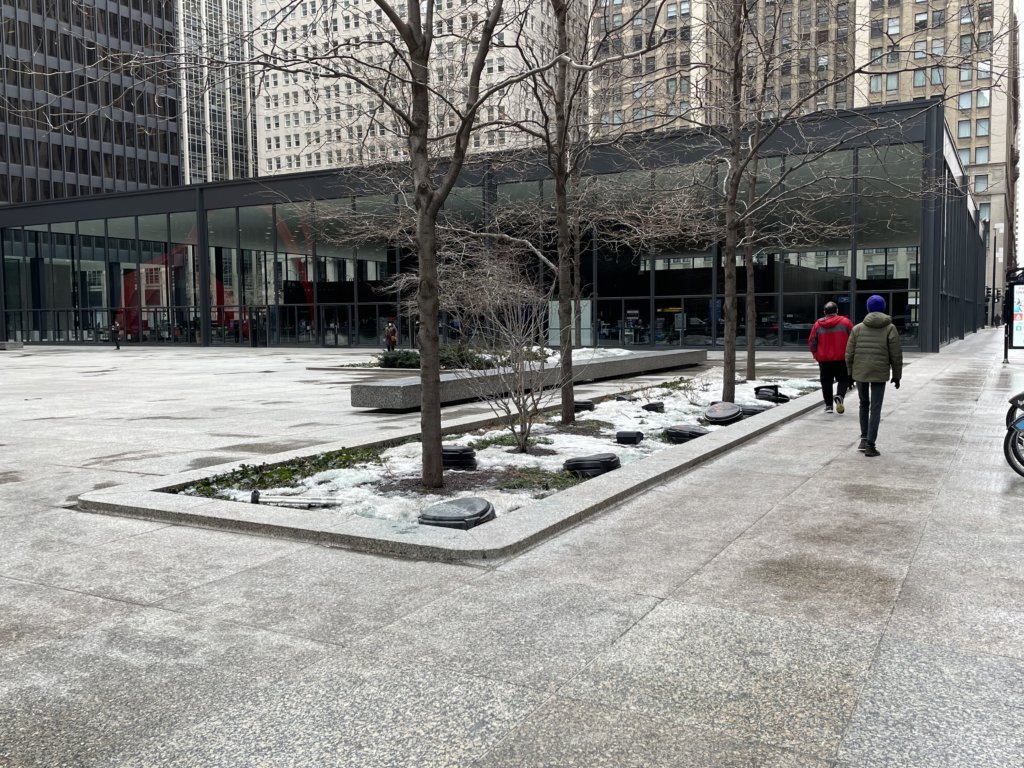
2. Chicago Board of Trade
141 W. Jackson Blvd.
Established in 1848, the Chicago Board of Trade is one of the world’s oldest, largest and most successful futures and options exchanges, dealing in a wide range of futures contracts for livestock, agricultural commodities, world currencies, energy products and much more. For the first 150 years of its existence, the Board of Trade and its parent company, the Chicago Mercantile Exchange (CME Group), traded futures and options via the “open outcry” system. This methodology featured traders who stood in amphitheater-style “pits” and yelled their orders to others, thereby creating a “live” market for futures contracts. This method required the Board to maintain huge trading floors with plenty of space for the pits, traders, runners, brokers, huge electronic “scoreboards” on the walls surrounding the trading floor, and much more. In 1994, the Board of Trade began to convert its trading platforms from open outcry to electronic trading. By 2015, the Board of Trade had closed most of its trading pits and ushered in the era of online trading. With no need for huge trading floors or adjoining office space, the CME Group sold the building to a consortium of real estate companies and leased only a fraction of the building’s office space that it needed for operations. With the pandemic slowing the return of office workers to the Loop, the building is emptier than ever before, an abandoned tower in the midst of Chicago’s busy financial district. It begs the question — what is the future of futures trading at the Board of Trade?
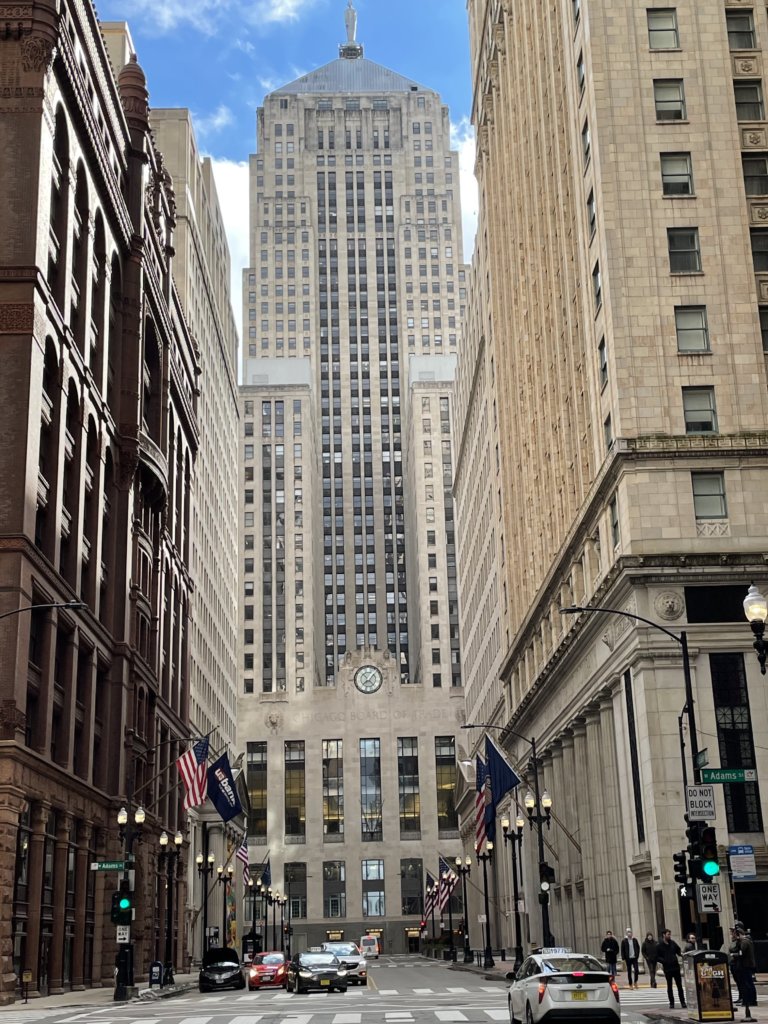
3. Harold Washington Library Center
400 S. State Street
Chicago needed a new main library and in 1991 it got one, the Harold Washington Library Center, a 10-story 750,000 square foot library facility with beautiful marble walls and floors, wood paneling throughout and a state-of-the-art lighting system. In less than 10 years, however, the new, massive library already was beginning to look like a dinosaur. Why go to the library when research could be conducted on a computer at home? Why go to the bother of checking out a book and returning it at a preordained time when you can purchase it cheaply on a computer or smartphone and read it wherever you go on your favorite reading device? Chicago has an excellent system of branch libraries serving neighborhoods throughout the city. Do we still need a huge central library serving a downtown business district that, because of lingering effects from the pandemic, is still bereft of workers, tourists and residents?
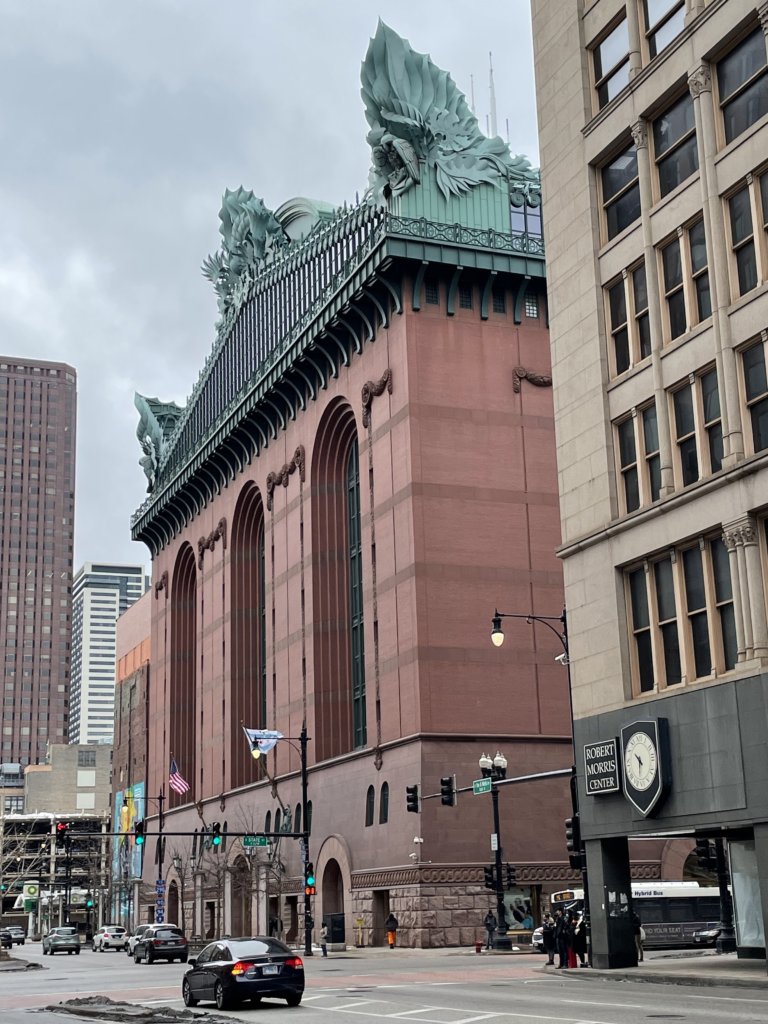
4. Macy’s
111 N. State Street
For well over 100 years, Marshall Field and Company and, later, Macy’s, operated a 14-story department store that occupies a full city block in the heart of the Loop. A throwback to the big department stores of the 1930s and 40s that catered to every possible need of urbanites, Macy’s State Street Store is no longer the retail powerhouse that it once was. In fact, the store is shrinking — in 2018 Macy’s sold the upper half of the building (floors 8-14) to an asset management company which, in turn, is leasing the space to corporate tenants. The parent company of Macy’s also is downsizing and reducing the company’s presence in Chicago. In 2021, Macy’s permanently closed its Water Tower Place store on the Magnificent Mile, a location it had occupied for 45 years. The last of its kind — a massive, expensive-to-operate, downtown-anchored department store — Macy’s State Street store appears to be living on borrowed time.
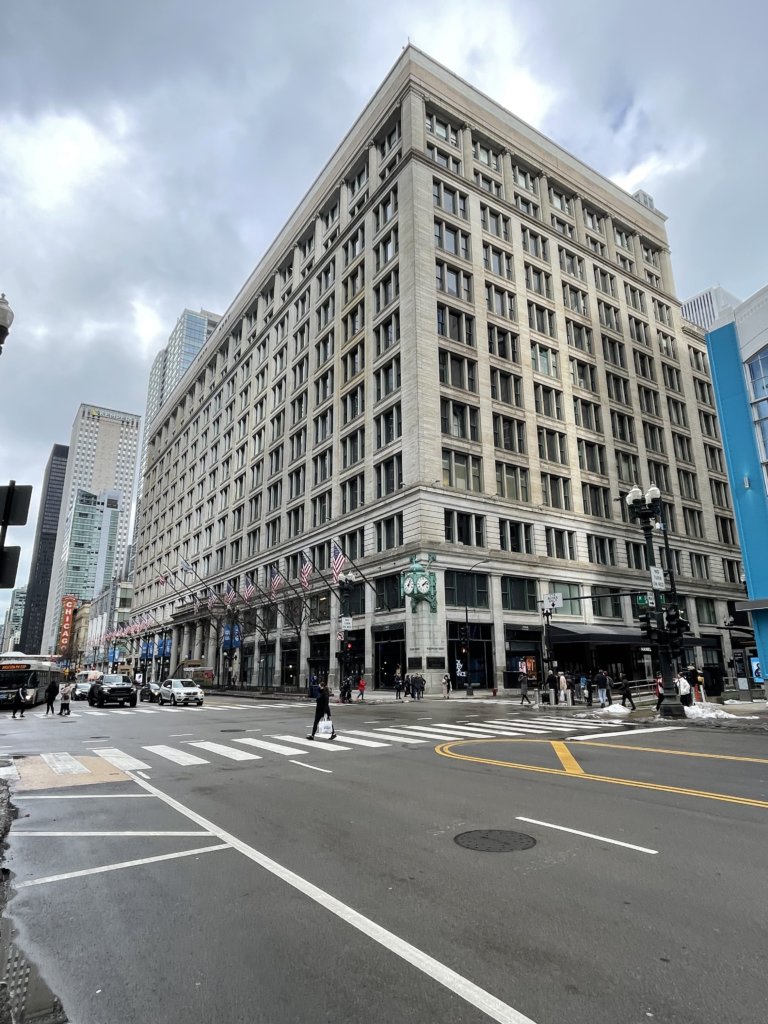
5. Soldier Field
part of the Museum Campus
Opened in 1924, Soldier Field has hosted a wide variety of sports teams and events over the years, including the Chicago Bears of the National Football League, the Chicago Fire of Major League Soccer, major college football games, heavyweight boxing matches and a variety of concerts and stage shows. Soldier Field has a football capacity of 61,500 and is the oldest and smallest stadium in the National Football League. This small size is one of the reasons its future is tenuous — the Bears recently announced that they might leave Soldier Field for a stadium they would build on a parcel of land that presently houses the former Arlington Park Race Course in Arlington Heights. Such a departure would leave Soldier Field without its marquee tenant — and its future very much in doubt.
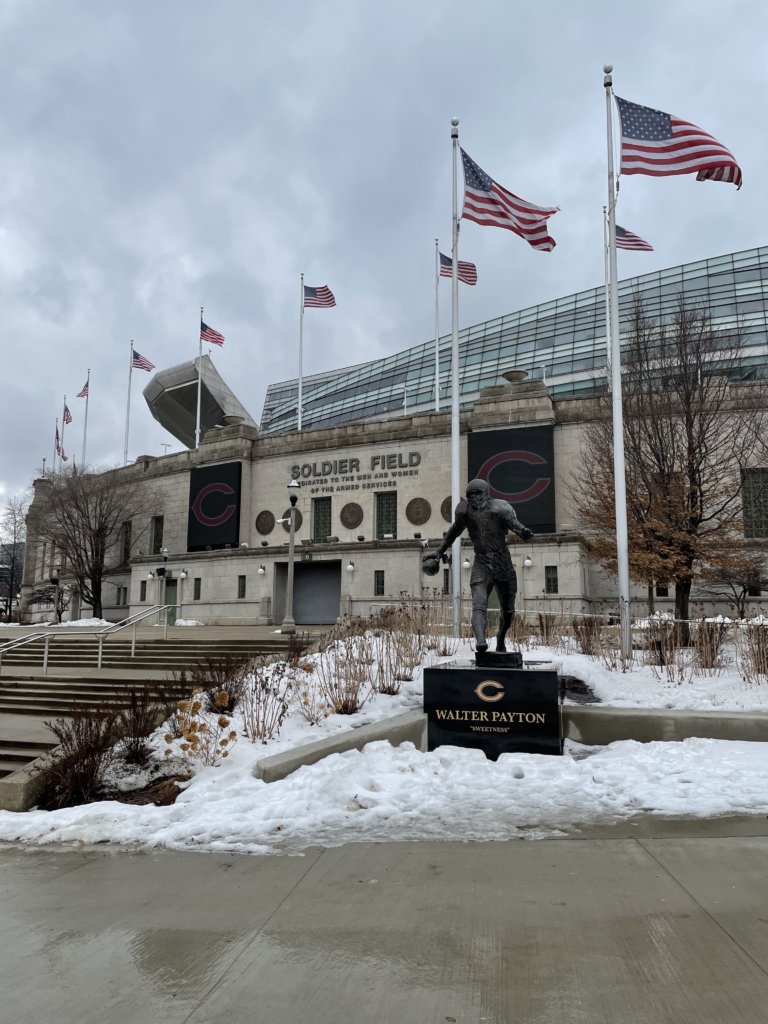
6. Manually-Operated Elevators
Fine Arts Building, 410 S. Michigan Ave.
The elevator was invented in 1853 by Elisha Graves Otis and introduced at the Crystal Palace Convention in New York City. For the next 90 years, most elevators in the U.S. had operators who opened the doors, guided the speed of the car between floors, leveled the car at each stop and announced destinations at each floor for riders. By the mid-1960s, most elevators in the U.S. became automatic, riders pushed buttons to ascend or descend to their destinations, operators were no longer needed. Today, there are approximately 22,000 elevators in the city of Chicago and only one set of manually-operated elevators — they are located in the 138-year-old Fine Arts Building on South Michigan Ave. If you miss the human touch that once came with a simple elevator ride, or if you’ve never ridden a manually-operated elevator, head over to the Fine Arts Building — before something “automatic” takes its place.
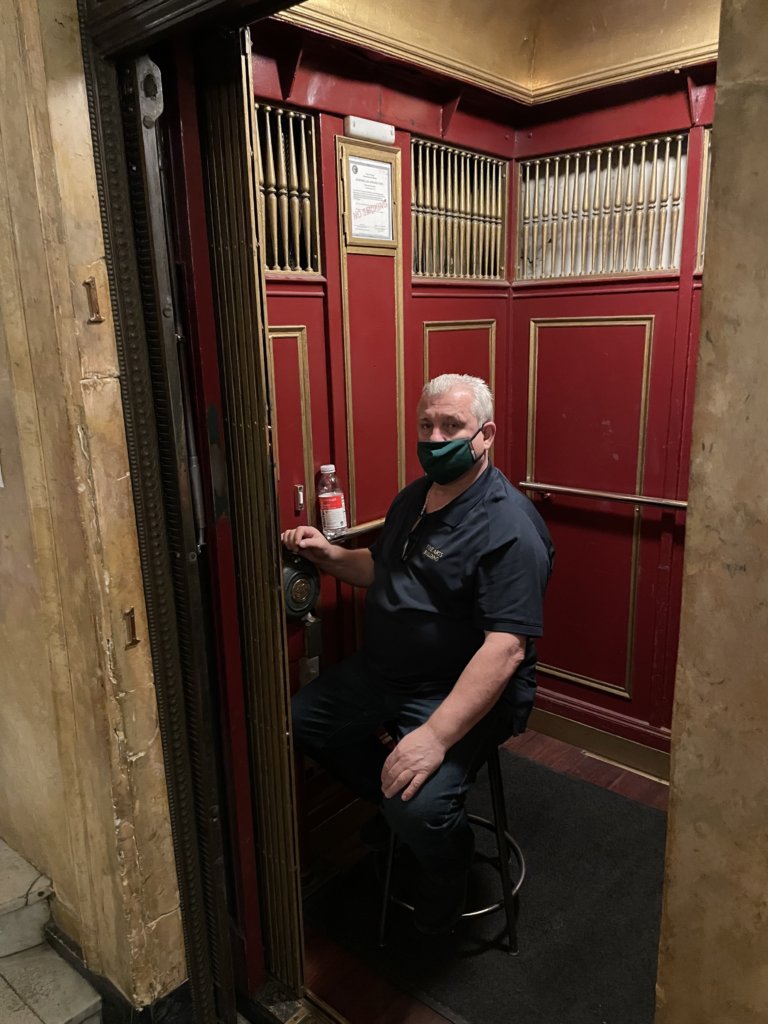
7. South Shore Line
Millennium Station, 151 N. Michigan Ave.
In 1915, interurban railroads were an extremely popular mode of city-to-city transportation with more than 15,000 miles of track connecting urban areas across the country. Essentially beefed-up streetcars that ran long-haul routes through suburbs and rural areas on their way to other urban areas, interurbans were so popular that they had grown to become the fifth largest industry in the United States. But interurbans didn’t last. Paved roads and interstate highways made cars and trucks more popular than trains and the interurbans began to fold and go out of business. By 1930 most of the interurban railroads had vanished; by 1960 only four remained in the entire country. Today there is only one remaining interurban railroad operating in the United States, the South Shore Line, which has been operating electric trains between downtown Chicago (Millennium Station) and South Bend, Ind. (86 miles) since 1905. The only Chicago area commuter railroad not a part of Metra (the Chicago area’s commuter rail agency), the South Shore Line continues to go it alone and, at least for now, continues to survive as the last of its kind.
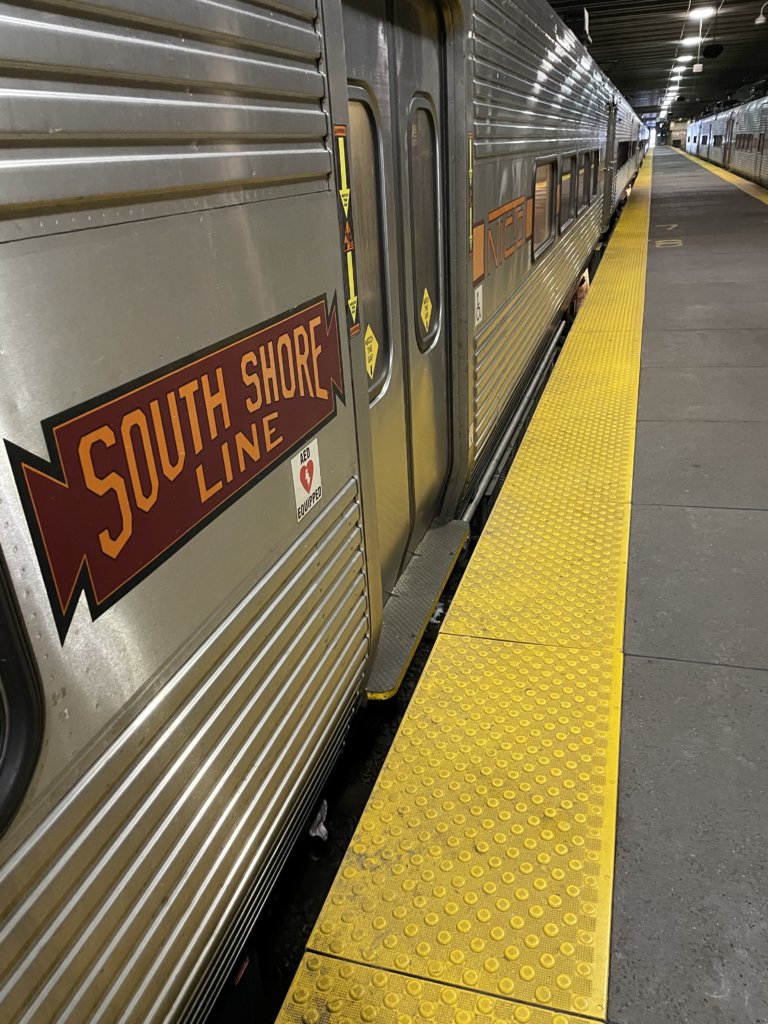
8. Greektown
Halsted and Jackson
There was a time when Chicago had two separate Greektowns, the original in the West Loop (Halsted St. and Jackson Blvd.) which dates to the late 1940s and “New Greektown” on the North Side (Lawrence Ave. and Western Ave.) which was popular from 1975 to 2000. New Greektown didn’t stand the test of time. Greeks who moved there to start businesses, night clubs and restaurants decided to move to the suburbs when rents in the neighborhood no longer were affordable. That left the original Greektown as the sole surviving Hellenic community in Chicago. But Chicago’s original Greektown also has steadily shrunk in size over the past two decades. Explosive growth of Fulton Market and West Randolph Street restaurant and entertainment district has led to urban renewal and gentrification of the entire West Loop. Huge apartment and condominium towers now stand where Santorini, Rodity’s, Parthenon, Pegasus and other stalwart Greek restaurants once plied their trade. Greek grocery stores and retail businesses have vanished as have many Greek residents, most of whom have long since moved to other neighborhoods in the city and suburbs. While a speck of the old neighborhood remains — the Greek Islands restaurant still is in business and the National Hellenic Museum continues to celebrate the history and culture of the neighborhood — most of Chicago’s original Greek neighborhood has fizzled out faster than the flames on an order of saganaki. Why is the neighborhood disappearing? It’s Greek to us.

9. 16-inch Softball
Softball was invented in Chicago at the Farragut Boat Club in 1874 when a wadded-up boxing glove was hurled at a “batter” who swung at it with a stick. The result was a new sport — 16-inch softball, a game played without a fielder’s glove. Over the years, 16-inch softball grew to be the summertime recreational sport of choice for adults throughout the Chicago area. Every city and suburban park or park district sponsored leagues that had waiting lists of teams waiting to play. Today, the popularity of 16-inch softball has faded considerably. Millennials view it as an old man’s sport, women prefer 12-inch softball (with gloves) and softball is no longer the only summertime league in town (today there are many other sports and recreational activities that compete with softball). Yes, you can still watch or play 16-inch softball in Chicagoland, but with each passing year, it is getting more difficult to do so.

10. Chicago Beaches
Because the water level of Lake Michigan has been increasing for a number of years, Chicago’s beaches have been getting noticeably smaller, thanks to erosion and sediment displacement. In fact, some of Chicago’s beaches have disappeared completely. Juneway and Fargo beaches on the North Side (in Rogers Park) are submerged underwater and a steady drumbeat of crashing waves have collapsed revetment projects that were designed to protect the shoreline. Other popular beaches — Oak Street, 12th Street, 57th Street, North Avenue — are only a fraction of the size they used to be —thin strips of sand with barely enough space for a row or two of beachgoers. A crashing meteor may have brought an end to dinosaurs on earth; climate change may be doing the same thing to today’s Chicago’s beaches.
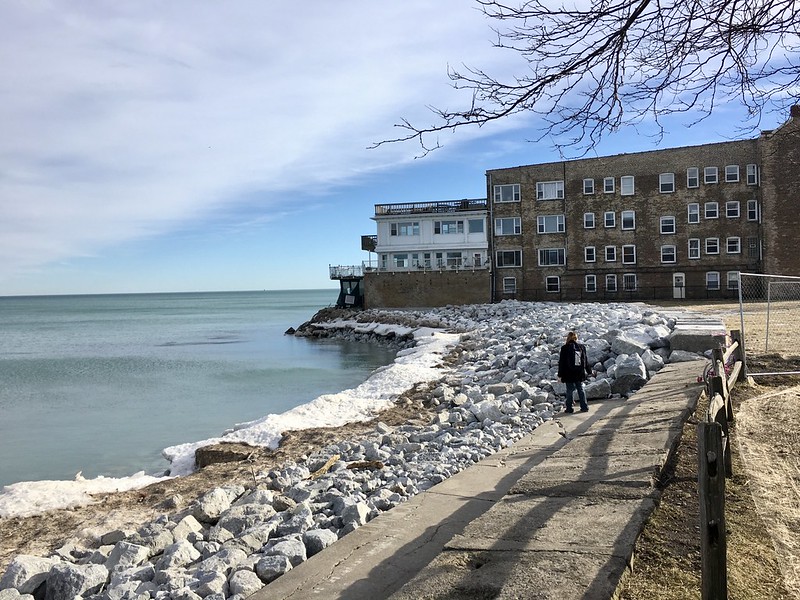
11. Non-Multiplex Movie Theaters
There’s only a handful of historic, non-multiplex movie theaters remaining in Chicago — Logan Theatre (2646 N. Milwaukee Ave.), Music Box (3733 N. Southport Ave.), Davis Theater (4614 N. Lincoln Ave.) and a few others. These old-time movie palaces generally have only one or two screens (unlike the multiplexes) and often book old, seldom-screened movies or smaller concerts or live staged events. With the rise of streaming services and other at-home entertainment options, the lingering effect of the pandemic on social activities (like seeing a movie) and the high cost of maintaining older, historic facilities, the continued survival of these institutions appears as though it will be a limited engagement.
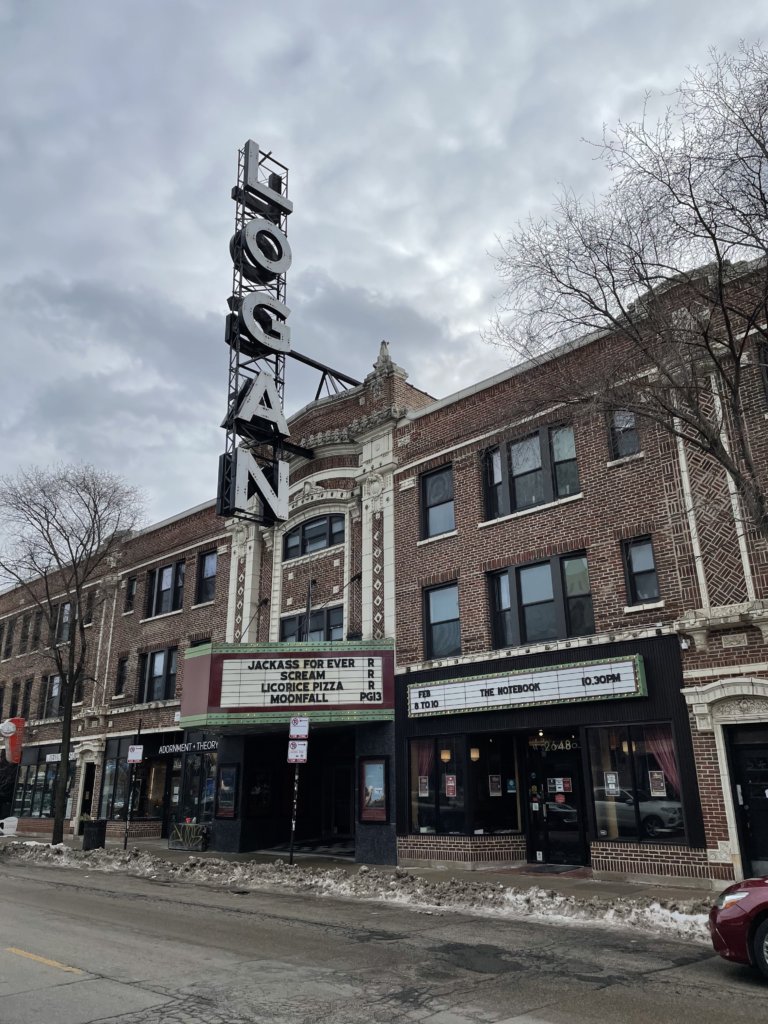
– By Tom Schaffner
For more stories about Chicago’s fascinating history, take a look at what Chicago city tours we are currently running! L Stop Tours runs unique tours all across Chicago’s neighborhoods that are guided by lifelong Chicago residents. Discover the amazing architecture, tasty food, and interesting tidbits about the city in one of our Chicago walking tours!
A Brief Timeline
Billy Goat Tavern, one of Chicago’s most unique and best-known bars, has had a number of famous “moments” in its long and illustrious history. Many are legendary
- A goat falls off a passing livestock truck in 1934 and is adopted by near West Side tavern owner Bill Sianis, who decides to grow a goatee and change the name of his bar. Billy Goat Tavern is born.
- Sianis and his goat are denied admission to the 1945 World Series at Wrigley Field against the Detroit Tigers because the goat “smells.” Sianis casts a curse on the Cubs and, when they promptly lose the series to the Tigers, sends a note to Cubs Owner P.K. Wrigley saying, “Who smells now?”
- In 1964, Sianis moves his tavern to its present location, 430 N. Michigan Avenue, Lower Level.
- A short sketch about a Greek diner resembling Billy Goat Tavern appears on NBC-TV’s Saturday Night Live on January 28, 1978. Overnight, the tavern becomes a “must-see” destination for locals and tourists.
- On April 29, 1997, Pulitzer Prize-winning newspaper columnist and number one Billy Goat Tavern booster Mike Royko dies at age 64.
I didn’t happen to be at the bar when any of these illustrious moments occurred, however, I’ve frequented the pub enough over the years to be deemed a regular and, as such, have experienced a number of great moments of my own in that wonderful den of iniquity.
Why am I a regular? The primary reason is because I have worked in the Streeterville neighborhood since 1974 and Billy Goat Tavern has always been a convenient but off-the-beaten-track bar where one could enjoy a couple of beers without being pestered (at least in the early years) by tourists. The other reason I hung out at Billy Goat was because I was a journalist and we all know that journalists like to hang out with other journalists at bars and listen to each other’s stories about what it’s like to be an ink-stained wretch. I was no exception.
Another Perspective
What are my greatest moments in Billy Goat’s over the years? I’m glad you asked — I’ve listed them in reverse order below:
10) The “Back” Room
A group of us — “young Turks,” as our boss labeled us — worked in a skyscraper that towered over Billy Goat’s like Wilt Chamberlain standing next to Mini Me. A quick elevator ride down to street level and few steps (maybe thirty?) put us in front of the famous “Butt in Any Time” sign at the entrance of the pub. It was easily the closest bar to our office. And because our office closed earlier than most, we were generally the first after-work revelers to descend on Billy Goat’s on Fridays for cocktails (4:01 p.m.). Being early allowed us to commandeer the back room (now called the VIP Room) and have it mostly to ourselves for an hour or two. Between 1980 and 1986, we solved all the world’s problems over cocktails in that location.
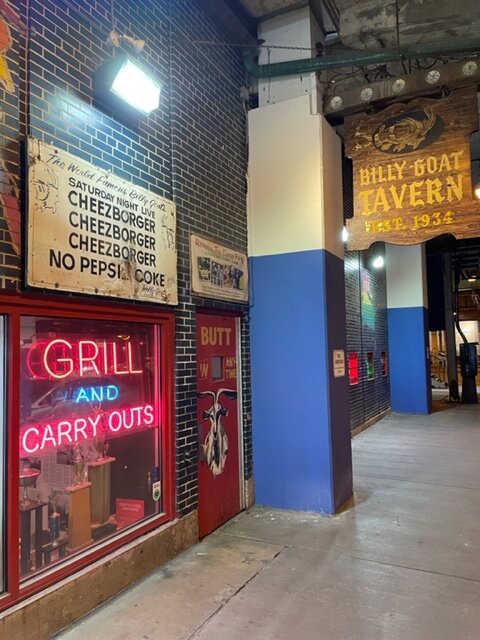
9) My Farewell Party
In 1986, I announced that I was leaving my job as director of communications for a Michigan Ave. firm and starting my own consulting business. Fellow employees put together a farewell party, replete with gag gifts and other paraphernalia. I remember one of the gag gifts distinctly — an actual cow’s tongue that was wrapped in cellophane. (The gag worked because a lot of us worked in the meat business at the time.) I momentarily put the gift on top of the Billy Goat’s serving counter to remove another item from my briefcase. At Billy Goat’s, the sight of a real cow’s tongue on a serving counter didn’t even register a blip among nearby patrons or employees. As a matter of fact, I think one of the employees asked me, “You want cheeps with that?”
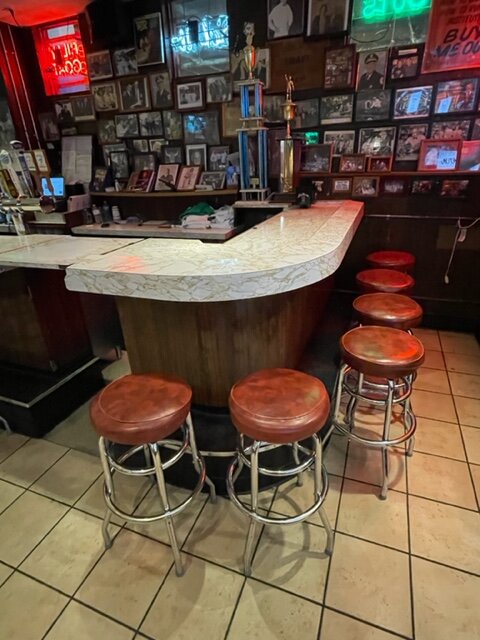
8) Drinking With the Pressmen
Back in the day, Billy Goat’s was not just for journalists, it attracted second and third-shift newspaper employees who worked late into the night printing Chicago’s daily newspapers. One night, a friend and I found ourselves downtown after midnight and we decided to go into the Goat for a quick one (or two). Seated next to us at the bar were two pressmen from the Chicago Sun-Times who regaled us with printing stories and offered to give us a tour of the presses at some point in the future. I don’t think I could have ever had that experience at any other Chicago bar. Thank you, Billy Goat.
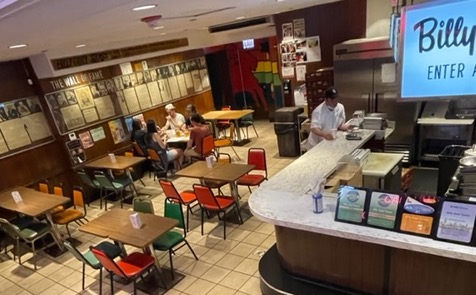
7) Nanny & Billy
The Womens’ and Mens’ toilets at Billy Goat have always been labeled “Nanny” and “Billy.” For some reason, this confuses tourists and other first-timers who don’t know which was the correct one to go in — so they’d ask us (when we were sitting nearby) and we’d tell them. “Nanny is a young male goat and Billy is grown one.” That was wrong, of course, but it was fun to look at the expressions on people’s faces as they sheepishly came out of the incorrect bathroom and scooted over to the correct one.
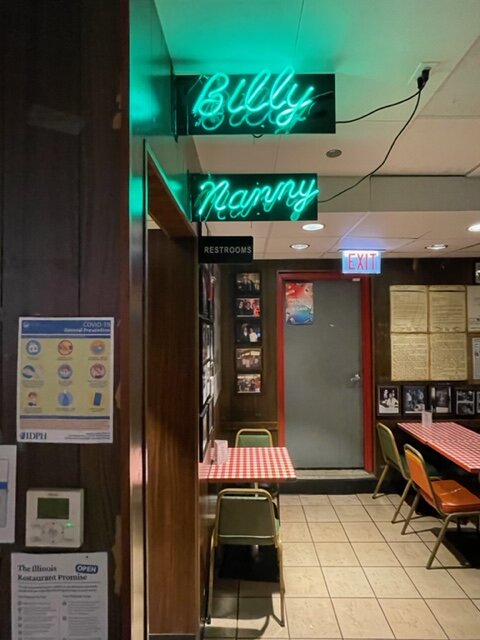
6) My First Legal Beer in Illinois
Like many other states at the time, Illinois lowered the legal age to purchase beer and wine to 19 in 1973. I turned 19 in September of 1974 and when I returned home for Christmas break from college, I started an internship at a Streetervillle public relations firm (on Erie St.) that was only a short walk to the Goat. Fortunately, my boss and several co-workers sensed the magnitude of my personal milestone and treated me to lunch where I washed down a double cheeseburger with a mug of Schlitz. It was December 20, 1974 — I was legally an adult and a Goat “virgin” no more.
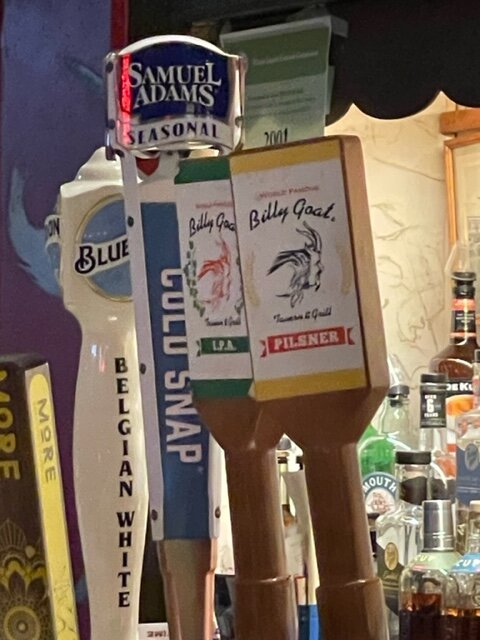
5) My Colleague Gets a Beer Dumped on Him
One of the guys I worked with at the Michigan Ave. firm had a penchant for saying wrong things to women he tried to flirt with. One evening a group of us were in the back room when suddenly a woman from our group stood up, called this guy a “disgusting pig” and, with the flourish of a symphony conductor, dumped a full mug of Schlitz on the offender’s head. Funny? Yes. A waste of a good beer? You be the judge.
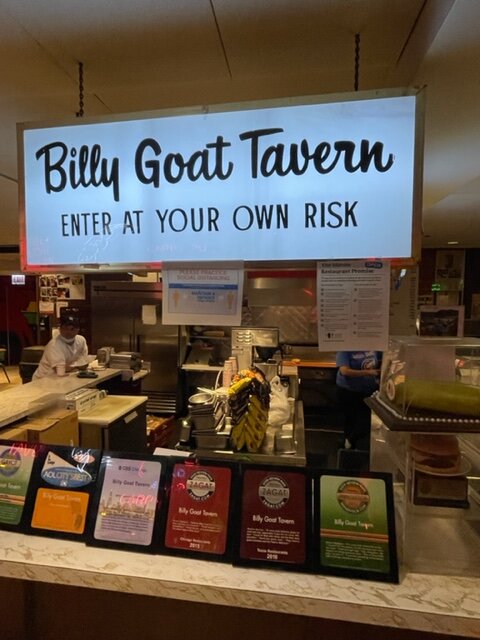
4) Consecutive Cheeseburgers Streak Comes to A Halt
It was about noon on a Wednesday in 1983 and I was feeling a little peckish, so I decided to pop down to the Goat for a beer and something to eat. I don’t know what got into me. I decided on the fly that for the first time in more than 10 years I was going to order something different to eat — no double cheeseburger for me today. When the grill cook (who knew me) looked at me and asked, knowingly, “Dobla Cheez?”, I surprised him and said, No. Give me a Grilled Ham and Cheese.” He looked at me strangely for a second and then said, “OK.” I enjoyed the sandwich but started a new cheeseburger streak two days later.

3) The Crack of Dawn
Her name wasn’t Dawn and I don’t even know what his name was — but neither of these tidbits matter. What’s important (at least to this blurb) is that my companion and I were enjoying a cocktail when suddenly I notice her edging her cell phone camera into position for a photo. I asked her what’s going on and she “shushes” me to be quiet with her index finger over her lips. I look over my shoulder to see what is so picture-worthy and I see a man and woman sitting at the bar with their backs to us. He is attempting to put his arm around her waist and she has a pair of shorts on with a plumber’s crack that is revealing a colorful tattoo and at least half a moon. I consider telling the couple about the “Butt In Any Time” sign at the entrance to the tavern but decide it’s probably best to keep that information to myself.
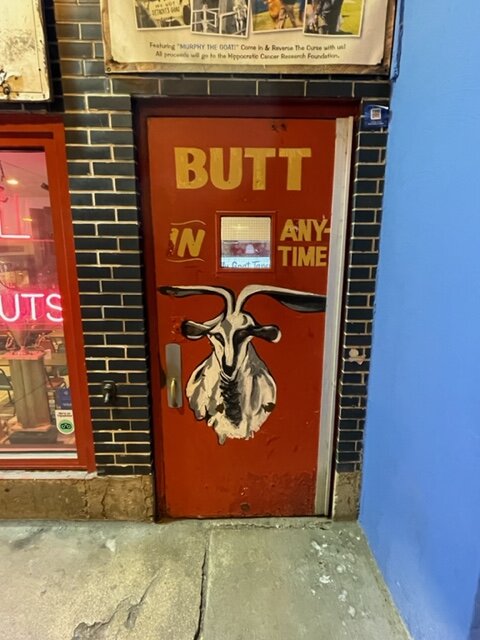
2) The French Chef Visits Billy Goat
In 1979, a group of my colleagues convinced Julia Child to become a judge at the National Beef Cook-Off in Omaha. While there, our group told Julia about the Billy Goat and how it was the closest bar (and grill) to our office. She said that she would like to visit and would let us know when she planned to go there. On June 1, 1981, she called our office and said she was going to visit Billy Goats the following day and did we want to join her? Of course we did — it was kind of like the Queen of England slumming with a visit to White Castle. It’s something you just have to witness in person. Like everyone else, Julia loved Billy Goat’s and especially the cheeseburger. “I could live on this forever,” she said.

1) Royko Gets His Comeuppance
A friend and I were enjoying beers at one of the front tables. Sitting no more than two feet away (at the next table) was Mike Royko and a colleague. My friend decides he must say something and interrupts Royko’s private conversation. He tells Royko how much he loves his column, praises him for being great writer and for being a Billy Goat’s booster. Royko, hearing my friend’s accent, says “You must be from New York. I can hear it in your words.” My friend denied being a New Yorker and threw him more flattery. Royko asked again, “Aren’t you from New York? Where are you from?” My friend looks him right in the eye and says, “I’m not from New York. I’m from Brooklyn.” Knowing he’d been roped into a trap, Royko ceased all conversation, motioned to his friend and the two of them got up and left. Even though he was a celebrated Pulitzer Prize winner, he should have known — a Brooklynite will never admit to being a New Yorker.

Holder of two journalism degrees, including a masters from Northwestern University, Tom Schaffner is a native of the Chicago area and has spent nearly 50 years as a writer, editor, publisher and professional communications consultant. He was also the founder, editor, and publisher of the Chicago File, a newsletter for former Chicagoans. Tom is also the co-owner of L Stop Tours.
– By Tom Schaffner
If you enjoy reading about the most frequently asked questions about the L and want to learn more about the city and its history, then consider signing up for our blog newsletter!
I spend a lot of time on the L.
Our tour company, L Stop Tours, utilizes Chicago’s elevated transit system to visit unique, culturally-diverse neighborhoods throughout the city. On every tour, we tell our guests as much as we can about the L — how it came to be, the size and reach of the system, how it has evolved over time, and so on — but our guests always seem to have more questions. Like many people, they are fascinated by the L and want to know more.
Below is a list of the most frequently asked questions we receive about the L:
How big is Chicago’s rapid transit system?
With 1,492 rail cars operating on eight routes, 224 miles of track, and nearly 230 million passengers transported per year (pre-pandemic), Chicago’s rapid transit system is the second-largest and second busiest system in the U.S. The most heavily-traveled route on the system is the Red Line, which carries 252,000 passengers on an average weekday (pre-pandemic). Another interesting fact, Chicago is the only major U.S. city to have an elevated system serving its downtown area.
How old is Chicago’s L?
The city’s first elevated rail line, constructed by the privately-owned Chicago and South Side Rapid Transit Railroad, began transporting passengers on June 6, 1892, on a four-mile stretch of track between Congress Avenue just south of downtown and 39th St. The service, a small steam locomotive that pulled four wooden nuecoaches, was an immediate hit with locals and was extended another four miles the following year to accommodate visitors attending the 1893 World’s Columbian Exhibition in Jackson Park. Three other privately-owned elevated transit lines were built in the next three years — the Lake Street Elevated Railroad, the Metropolitan West Side Railroad and the Northwestern Elevated Railroad.
When did the L system go electric?
In 1895, the Metropolitan West Side elevated line was the third L company to begin rapid transit operations in Chicago but the first to use electricity to power its trains. Two years later, the South Side L introduced multiple-unit control in which the operator can control all motorized cars in a train, not just the lead car. Shortly thereafter, the remainder of the lines switched to electric service. Interestingly, electricity and multiple-unit control remain standard features on most of the world’s current rapid transit systems.
How did Chicago’s Loop get its name?
When Chicago’s first elevated lines went into operation, none were allowed to provide service in the downtown area — property owners felt the system was ugly and that it would reduce property values. A wealthy financier, Charles Tyson Yerkes, thought otherwise and was able to convince property owners that an elevated transit system would bring more people downtown and would be good for business. Finally, the property owners agreed and Yerkes built what he called the “Union Loop,” a 1.79-mile closed circle that connected all of the city’s privately-owned elevated railroads into a common system. Over the years, the term “Loop” has come to refer to Chicago’s original downtown area, or more precisely, any property that is located inside the Loop elevated structure (an area bounded by Lake Street on the north, Wabash Avenue on the east, Van Buren Street on the south and Wells Street on the west).
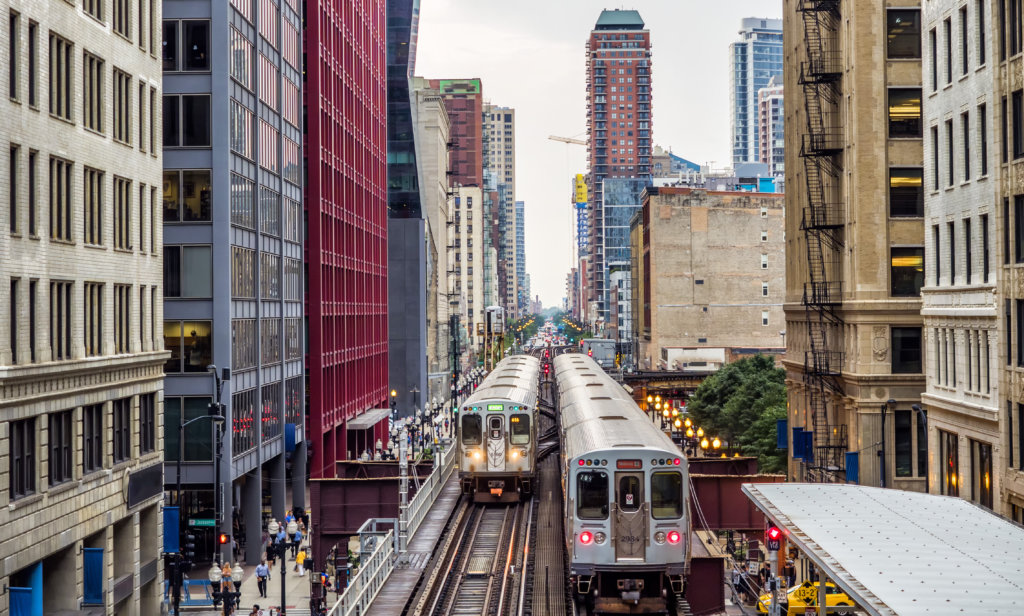
Why did Chicago decide to elevate its transit system while other cities used subways?
Chicago’s resolve to rebuild itself after the Great Chicago Fire resulted in an unprecedented period of growth and expansion for the city — between 1872 and 1900, Chicago was one of the fastest growing cities in the world. As a result, pedestrians, horse-drawn carriages and streetcars converged to create gridlock on downtown streets — city fathers knew that a new transit system was badly needed. Although subways were the choice in other growing cities like New York and London, Chicago selected elevated railways because they were cheaper to construct and did not require much digging (there were concerns at the time that the city’s swampy soil might not tolerate a subway system).
When and why did the Chicago Transit Authority come into existence?
In 1924, all of Chicago’s original L companies were combined into a new private entity, the Chicago Rapid Transit Company, in order to facilitate better cooperation among the lines. Following World War II, Chicago and Illinois officials decided that all bus, streetcar and rapid transit lines should become publicly-owned. In 1947, the newly established Chicago Transit Authority assumed control of all transportation systems within the City of Chicago.
Chicago built two subways, not elevated lines, many years after the elevated system was well established. Why?
The State Street subway, a 5-mile segment in the middle of today’s Red Line, went into operation in 1943 and the Dearborn Street subway, serving the Blue Line downtown, was completed in 1951 Both of these service expansions were built as subways in order to minimize train traffic on the Loop tracks and to speed passenger travel through the downtown area. To this day, trains on the Red and Blue lines descend from elevated tracks just outside the Loop into the subways in the downtown area (35 feet below ground), make several stops, and ascend to elevated tracks after emerging from the downtown subway.
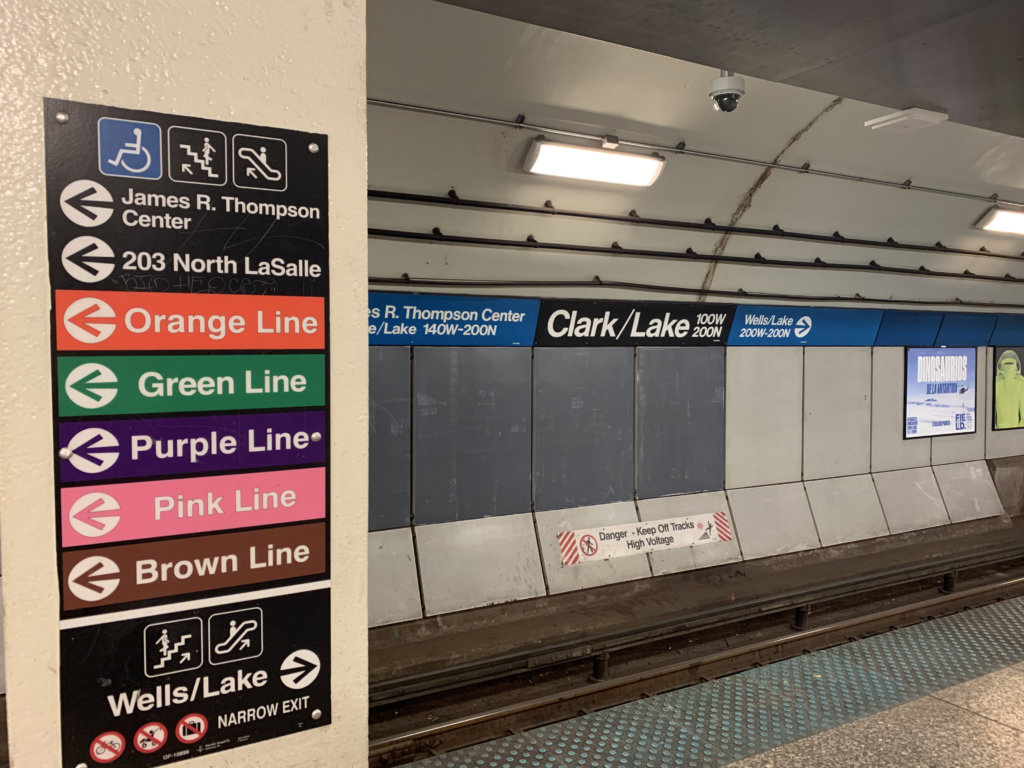
Why are there no public restrooms at CTA stations?
The CTA used to have public restrooms at most stations but closed them in the 1970s. (These restrooms are now locked and available only to CTA employees and/or passengers with an emergency medical condition.) The reason? According to the CTA, public restrooms require significant resources to maintain and keep secure — and the CTA does not have the resources to maintain these facilities or keep them secure at a high enough level for the general public.
Does the CTA ever use old rail cars for regular service?
Not for daily or regular service, however, the CTA maintains a small fleet of vintage rail cars, the Heritage Fleet, that is used for charters or special events in which the public is invited. Additionally, Chicago L car number one — the very first car used on the L tracks (1892) — is on permanent display at the Chicago History Museum. Visitors to the museum are invited to step aboard the car and look around.
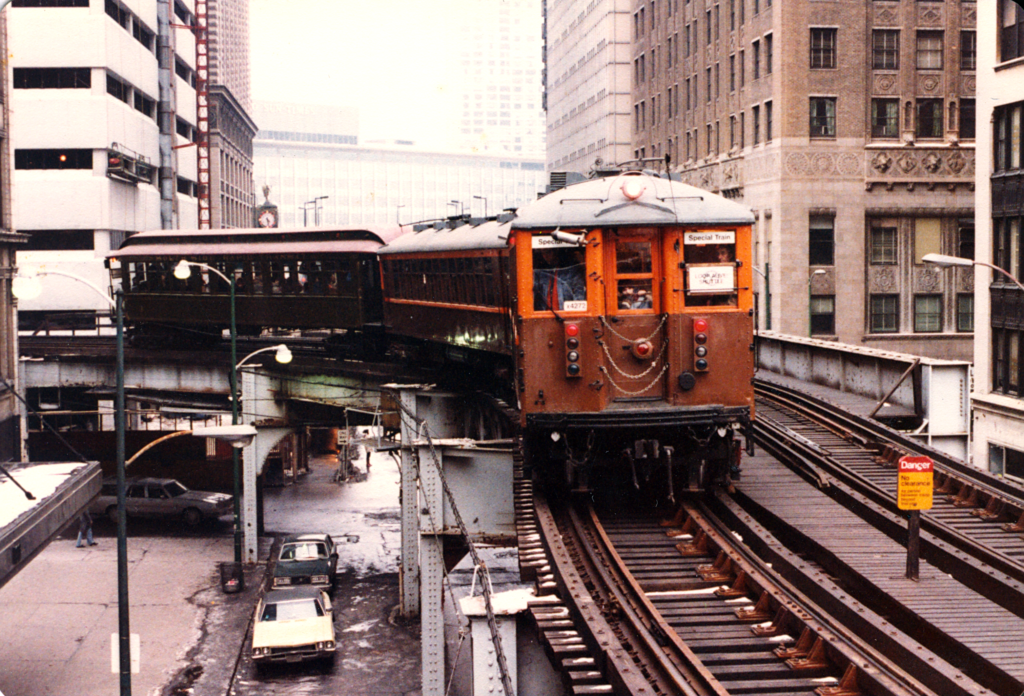
Is it the “L” or “el?”
Both the CTA and the four original privately-owned transit companies always referred to their trains as the “L,” meaning that the nickname (short for elevated railway) dates back nearly 130 years. It is thought that rapid transit operators in Chicago preferred “L” because it was different from elevated service in New York City. which went by the nickname “the el.”
Why are Chicago’s rapid transit cars shorter than those in other cities?
Chicago’s transit vehicles are shorter in order to better navigate the sharp turns in the Loop, such as Adams and Wabash and Wells and Van Buren. And while Chicago’s rapid transit system is the second busiest in the United States, its shorter cars (48 feet versus New York’s 51 feet) comfortably handle its ridership loads on a daily basis. In short, there is not a need for longer cars.
How much is a single ride on the L?
A single-ride train ticket — three rides within two hours of purchase — costs $3 (or $5 if purchased at O’Hare Airport). Riders can also utilize the CTA’s electronic fare program, Ventra, which offers a number of different fare and pass options that can be loaded onto the reusable card, as well as a cash balance or electronic payment options.
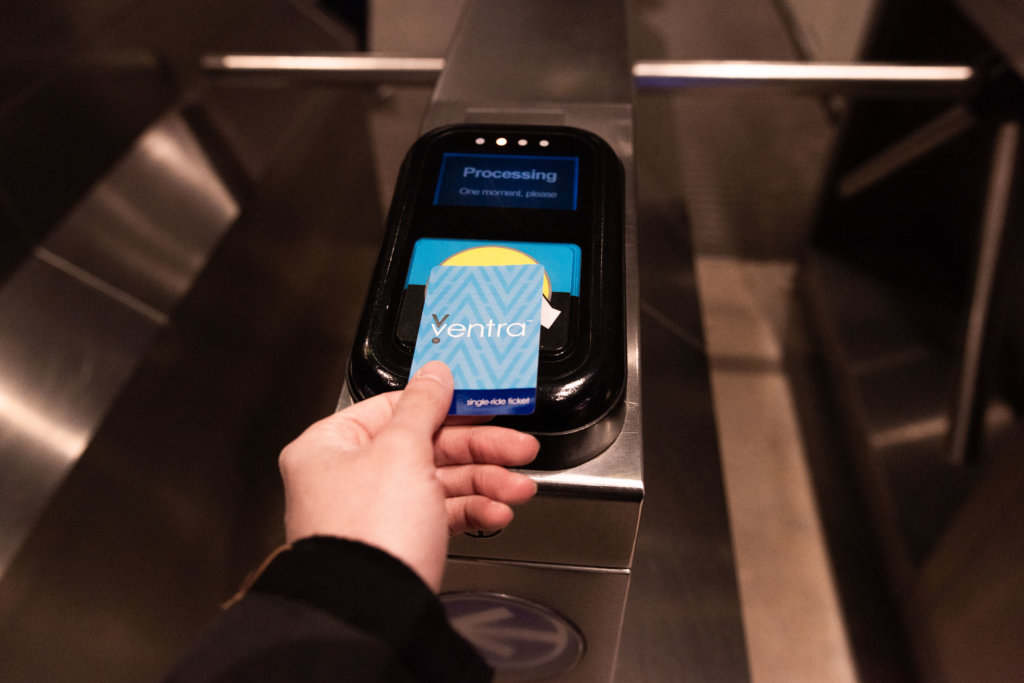
Are there any express trains on the CTA system?
The only scheduled express train service on today’s CTA system is the Purple Line, which skips a few stops on its way to and from Howard Street and the Merchandise Mart, cutting about 15 minutes off the normal 45-minute all-stop service one would encounter by taking Red and Brown Lines to either of these destinations. Years ago, the CTA utilized a skip-stop service on all of its routes (“A” and “B” trains that stopped at alternate “A” and “B” stops in order to speed transit times), but that service was eliminated in 1995.
Any expansion of the system planned for the future?
The Chicago Transit Authority is proposing to extend the Red Line from the existing terminal at 95th/Dan Ryan to 130th Street, subject to the availability of funding. The proposed 5.6-mile extension would include four new stations near 103rd Street, 111th Street, Michigan Avenue, and 130th Street.
Holder of two journalism degrees, including a masters from Northwestern University, Tom Schaffner is a native of the Chicago area and has spent nearly 50 years as a writer, editor, publisher and professional communications consultant. He was also the founder, editor, and publisher of the Chicago File, a newsletter for former Chicagoans. Tom is also the co-owner of L Stop Tours.
– By Tom Schaffner
Seven Weird Chicago Laws That Are Truly Unique
If you Google “weird Chicago laws,” you’ll get a number of hits that list blue laws that were enacted in another era — laws that were designed to restrict certain activities on Sundays for religious reasons, such as gambling or the sale or consumption of alcohol.
Some of the weird Chicago laws that are still on the books border on the bizarre: it is illegal for a Chicagoan to dine in a restaurant that is on fire; it’s illegal for dogs to drink whiskey; it’s illegal for your pet to have poor hygiene; you might be picked up as a vagrant if you have less than $1 on you.
While strange laws aren’t unique to Chicago — many U.S. cities still have them on the books — our Town has always taken a certain amount of pride in doing things differently than other U.S. cities. From innovative legislation to bold new ideas, Chicago has always done things its own way — right or wrong.
Check out our list of weird Chicago laws:
- Can’t buy a car on a Sunday
- The movies you used to watch were censored
- Later Saturday night tavern hours
- No meat after 6 p.m. or on weekends
- Lack of food trucks
- The evils of Foie Gras
- No pick-up trucks on Lake Shore Drive
Can’t Buy a Car on a Sunday
In 1984, at the behest of the Chicago Automobile Trade Association, the Illinois legislature passed a weird Chicago law that forbade auto dealers in the state from opening for business on Sundays. Why? The dealers say they wanted a day for their employees to be with families and not have to worry about stolen sales from other dealers that decided to stay open on that day. The ban on car sales on Sundays is still in effect throughout Illinois. Because many other retailers are now open seven days a week, one can only wonder why auto dealers need to be singularly protected.
The Movies You Watched Were Censored
From 1907-1984, every movie that played in a Chicago movie theatre had to receive an “OK” from the Chicago Film Review Board. The Film Review Board was operated by the Chicago Police Department and its board members generally consisted of widows and orphans of Chicago police officers. Sometimes the Board recommended edits to films, sometimes films were banned entirely, like the original version of “Scarface.” It opened in theaters nationwide in early 1932 but didn’t play in a Chicago theatre until late in 1942. It seems the film Board didn’t like the way Chicago was portrayed. The Board was disbanded in 1984 because it had become irrelevant in the face of rigorous film industry self-regulation (a rating system).
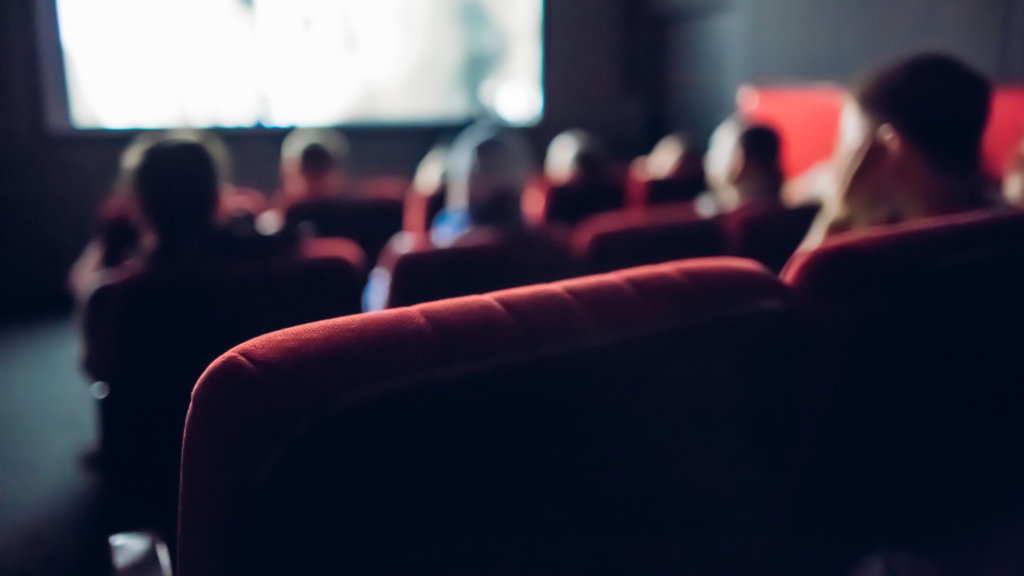
Small movie theater
Later Saturday Night Tavern Hours
Except for gambling towns like Las Vegas and Atlantic City where casinos serve alcohol 24 hours a day, Chicago has the latest Saturday night closing time for a tavern — 5 a.m. — than any other city in the nation. (Many cities match Chicago’s 4 a.m. closing time during the week, however.) Approximately 150 taverns in Chicago have 4 a.m./5 a.m. liquor licenses, a number that has held steady for the past few decades.
No Meat After 6 p.m. or on Weekends
Between 1952 and 1977, the sale of meat was banned at supermarkets throughout the Chicago metropolitan area after 6 p.m. on weekdays and all day on Saturdays and Sundays. To ensure that customers didn’t try to purchase product, retailers threw a tarp over the meat case; customers who wanted to enjoy a barbecue over the weekend had to remember to “stock up” during the week or go without. Why the weird Chicago law? The local Meat Cutters union wielded enormous power over the local retailers with their labor contracts — and the Meat Cutters didn’t want their butchers working late hours or on weekends when they could (in theory) be home with their families. Eventually, the ban was lifted when the union realized that its members’ jobs were in jeopardy if the store couldn’t sell meat products during the store’s business hours.
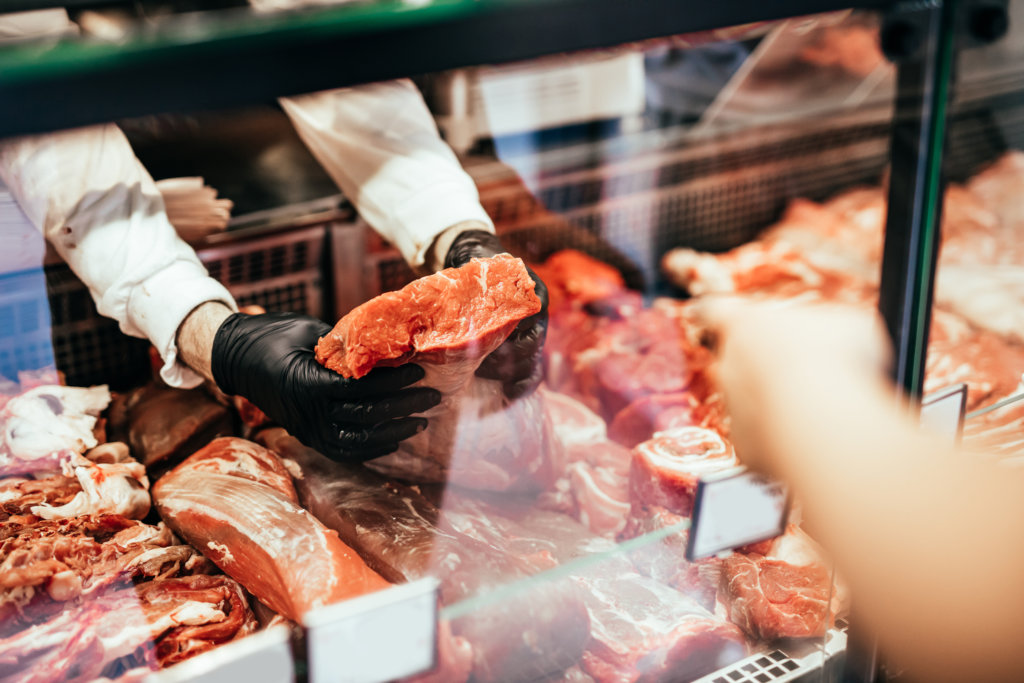
Lack of Food Trucks
The City of Chicago has long had a love/hate relationship with street food vendors — both of the Daley mayoral administrations (1955-1976 and 1989-2011) made it difficult for operators of food carts to peddle their wares on street corners or at public events. When food trucks became all the rage in New York and Los Angeles in 2010, Chicago again took a cautious approach toward licensing them. Initially, the city didn’t allow any food preparation on board the trucks, only products that had been prepared and packed in a commercial kitchen were allowed. Two years later, the city relented on the preparation rule but then issued an edict that no truck could locate within 200 feet of an existing brick and mortar restaurant and when they did park it was for a limited time. Why? The city wanted to protect the turf of existing restaurants, not wanting upstart food trucks to steal their business. Today there has been an accommodation of sorts — the city limits the number of food truck licenses but lets them park in pre-established zones throughout the city.
The Evils of Foie Gras
In April, 2006, the Chicago City Council barred restaurants from serving foie gras — fatty duck or goose liver — because the animals were mistreated and abused while they were being raised. The City became a laughing stock worldwide and a displeased Mayor Richard M. Daley called it ‘the silliest law they’ve (the Council) ever passed.” Thanks to intense lobbying by the restaurant industry, the ban was overturned two years later and customers were once again allowed to consume the gastronomic delight. Interestingly, New York City recently approved legislation that will ban foie gras in restaurants beginning in 2022. Who’s the laughing stock now?
No Pick-Up Trucks on Lake Shore Drive
Before automobiles, the city had a number of ordinances prohibiting certain activities near the lakefront. One of them banned commercial vehicles (anything that carried freight) from using streets adjacent to the lake, such as Lake Shore Drive. In 2020, the ban on trucks is still in effect for Lake Shore Drive and, yes, that includes pick-up trucks — even those that are not carrying freight or those that are not even considered to be commercial. Although this weird Chicago law isn’t closely monitored, Chicago Police still issue citations whenever they see pickups headed down the Drive and unknowing drivers are shocked to learn that they have broken a weird Chicago law that no one knows exists.
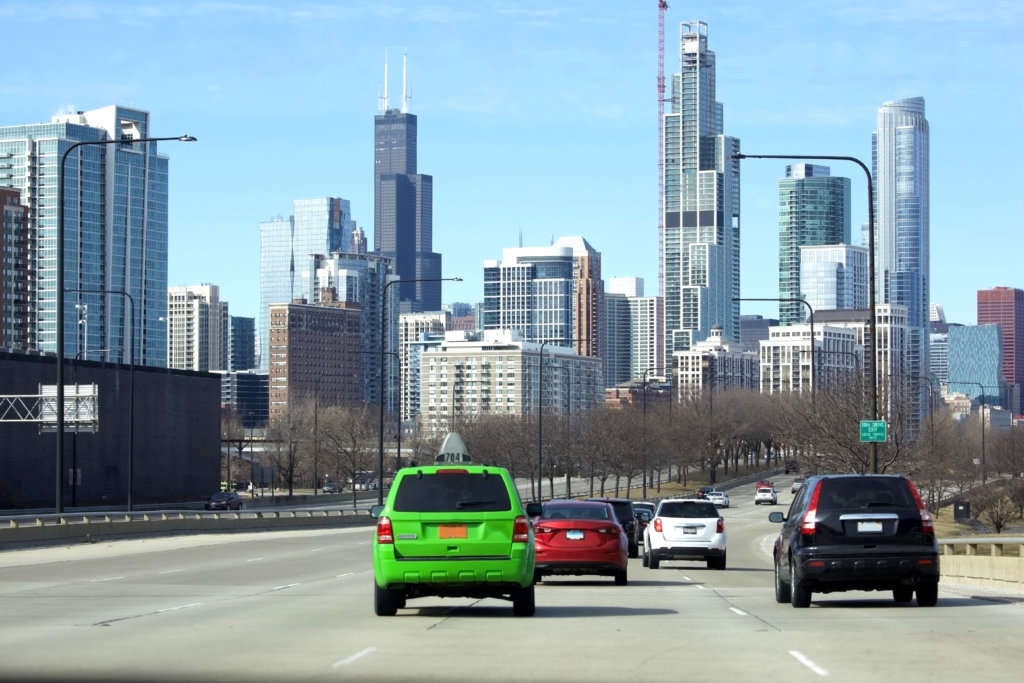
If you want to learn some more interesting facts and stories about Chicago, consider taking a Chicago city tour with L Stop Tours!
Holder of two journalism degrees, including a masters from Northwestern University, Tom Schaffner is a native of the Chicago area and has spent nearly 50 years as a writer, editor, publisher and professional communications consultant. He was also the founder, editor, and publisher of the Chicago File, a newsletter for former Chicagoans. Tom is also the co-owner of L Stop Tours.
– By Tom Schaffner
The Railway Capital of the US
Because of its strategic location in the center of the country — halfway between the Atlantic and Pacific Oceans and smack in the middle of America’s manufacturing and agricultural belts — Chicago has always been the undisputed railway capital of the United States. Even today, more trains arrive in or depart from Chicago on a daily basis than anywhere else in the country (and likely the world).
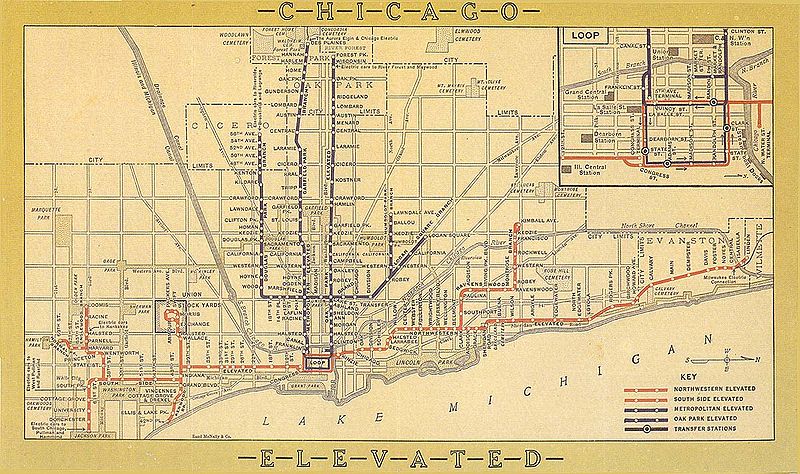 Throughout history, Chicago and railroads have had a symbiotic relationship — both have helped each other grow into strong and viable entities. Chicago contributed to the success of railroads by supporting their growth and development with flexibility and by providing a proactive regulatory environment; the railroads helped Chicago grow by moving billions of tons freight into and out of the city on a regular basis and by making the city a key hub in their network of passenger trains.
Throughout history, Chicago and railroads have had a symbiotic relationship — both have helped each other grow into strong and viable entities. Chicago contributed to the success of railroads by supporting their growth and development with flexibility and by providing a proactive regulatory environment; the railroads helped Chicago grow by moving billions of tons freight into and out of the city on a regular basis and by making the city a key hub in their network of passenger trains.
Additionally, Chicago made trains the centerpiece of its own public transportation system. Beginning with the city’s first elevated railway in 1892 — the “Alley L” (the southern portion of today’s Green Line) — the city has made trains the primary conveyance for moving from neighborhood to neighborhood or one side of town to the other.
Top Train Museums
As the railway capital of the U.S., Chicago is fortunate to be located within a few hours’ drive of several of the nation’s best train museums:
- Fox River Trolley Museum (South Elgin, IL) — The museum maintains a collection of 30 antique electric trolleys, railroad cars and locomotives and is focused on railways and transit lines of the Chicago area. One of the museum’s prized pieces of equipment is the wooden interurban car #20 from the Chicago Aurora and Elgin Railroad. Constructed in 1902, car #20 is the oldest interurban car operating in the United States.
- Illinois Railway Museum (Union, Il) — Located about 60 miles northwest of the city, the Illinois Railway Museum is the largest railway museum in the world. Founded in 1953, the museum has in its collection 450 pieces of historic equipment, including steam engines, diesels, streetcars, interurbans and passenger and freight cars, many of which can be ridden on tracks that run throughout the site. For fans of Chicago’s elevated transit system, a visit to Barn 8 is a must — it contains every type of L car that has run on the system since 1898.
- Museum of Science and Industry (Chicago, IL) — Though technically not a railway museum, the Museum of Science and Industry contains several historic locomotives, the opportunity to tour the Burlington Route’s 1934 Pioneer Zephyr, which was America’s first diesel-electric stainless steel Streamliner, and the world’s largest model train exhibit, “The Great Train Story,” which presents 2,200 miles of scenery and stories as a model train emulates the trip from Chicago to Seattle along 1,400 feet of track.
- A. Philip Randolph Pullman Porter Museum (Chicago, IL) — There are no locomotives or passenger cars to examine or explore but that doesn’t make this museum any less important in the history of train travel in the U.S. This museum, housed in Pullman National Historic Landmark District, contains a collection of artifacts and documents related to the Brotherhood of Sleeping Car Porters and celebrates the organization’s role in the U.S. labor movement. The porters, most of which were African American, were employed by the manufacturer of the cars, George Pullman, and his Chicago-based Pullman Palace Car Company.
- Mid-Continent Railway Museum (North Freedom, WI) — Located about a four-hour drive northwest of Chicago, the Mid-Continent Railway Museum has 13 steam locomotives and 7 diesel engines, including #1325 from the Chicago and North Western Railroad. The museum also has the largest collection of wooden passenger cars in the United States, has six of only seven surviving wooden boxcars built by Mather Stock Car Company and has in its collection the nation’s last surviving fish car.
- Hoosier Valley Railroad Museum (North Judson, IN) — Halfway between Chicago and Indianapolis is the Hoosier Valley Railroad Museum, which is located near the junction of four historic railroad lines — the Chesapeake and Ohio, the Pennsylvania, the New York Central and the Erie. Founded in 1988, the museum has more than 30 pieces of rolling stock in its collection, including freight cars, cabooses, diesel switch engines and an Orton locomotive crane. The museum itself is housed in a station formerly owned by the Erie Railroad.
- National New York Central Railroad Museum (Elkhart, IN) — The National New York Central Museum is dedicated to the preservation of the New York Central and includes several outdoor equipment displays, indoor model railroads, artifacts from the railroad and other exhibits pertaining to the history of railroading. The museum consists of a modified New York Central Twentieth Century Limited train and a freight house built by the Lake Shore & Michigan Southern Railway in 1907.
- New Buffalo Railroad Museum (New Buffalo, MI) — Located on the grounds of what was once the largest train yard in Southwest Michigan, the New Buffalo Railroad Museum is home to exhibits and collections recalling New Buffalo’s proud heritage as a railroad hub for both the Pere Marquette and Chesapeake & Ohio. The rail line behind the Museum still carries CSX freight trains through the stanchions of one of the original coal towers. Visitors can stroll through a box car and ap Pullman Sleeper Car for military troops.
- Monticello Railway Museum (Monticello, IL) — About 18 miles west of Champaign, the Monticello Railway Museum is home to over 100 pieces of railroad equipment, including several restored diesel locomotives and cars. Founded in 1966, the organization’s original goal was to encourage the Chicago Burling and Quincy Railroad to continue operating steam excursions for rail enthusiasts. When that effort failed, curators of the organization decided to operate their own steam excursions and, shortly, thereafter, a museum was born.
If you’re interested in visiting other museums in the city, many of our Chicago tours visit museums that cover all sorts of topics — from Chinese history to American economics. Learn more about L Stop Tours today!
Holder of two journalism degrees, including a masters from Northwestern University, Tom Schaffner is a native of the Chicago area and has spent nearly 50 years as a writer, editor, publisher and professional communications consultant. He was also the founder, editor, and publisher of the Chicago File, a newsletter for former Chicagoans. Tom is also the co-owner of L Stop Tours.
– By Tom Schaffner
Every year, the “who’s who” of candy makers visit the international “Sweets and Snacks Expo” held at Chicago’s McCormick Place. Ever wonder why? Chicago has long-held the title of “Candy Capital of the World” so it’s only fitting that the largest candy maker convention in the world is held here on an annual basis.
Transportation, geography and a steady supply of immigrant workers in the mid-19th century are what lead to Chicago’s success as a candy maker and distributor of candy products worldwide. Access to rail lines and Great Lakes shipping sped the flow of ingredients into the city and made the outbound distribution of finished candy products around the globe effective and efficient. Newly-arrived immigrants provided a steady stream of workers to fill candy manufacturing jobs while others opened small retail candy shops across the city featuring products made from Old World family recipes.
Through the years there have been a number of innovative candy makers that have called Chicago “home sweet home.” The following is our list of great Chicago candy manufacturers and their contributions to the world of sweet treats.
Candy Makers in Chicago
Wm. Wrigley Jr. Company
Selling packs of chewing gum can lead to big business and no one was more successful at it than the Wrigley Company, an iconic candy maker company that was founded in Chicago in 1891. Initially a soap and baking powder manufacturer, Wrigley offered purchasers gum as a premium to sell the company’s primary products. Wrigley soon realized however that the gum was more popular than the other products so he retooled his factory so it could manufacture gum. In 1893, Wrigley introduced Juicy Fruit and Spearmint brands; Doublemint was introduced in 1914. Though the company was acquired by Mars, Inc. in 2008 for $23 billion, it still maintains a Global Innovation Center on Goose Island.
Doublemint, Juicy Fruit and Spearmint are available on Amazon! As an Amazon Associate, we earn from qualifying purchases.
Blommer Chocolate Company
If you’ve ever been in the Loop and smelled chocolate in the air, you’ve been properly introduced to Blommer, a West Loop chocolate candy maker that has been processing cocoa beans since 1939. A wholesaler, not a retailer, Blommer has become one of the largest independent candy makers and chocolate ingredient suppliers in North America, accounting for nearly 45 percent of cocoa beans processed in the U.S. Although the company’s main business is supplying chocolate ingredients to other companies, the company maintains a small retail shop adjacent to the manufacturing plant that sells chocolates and various baking supplies.
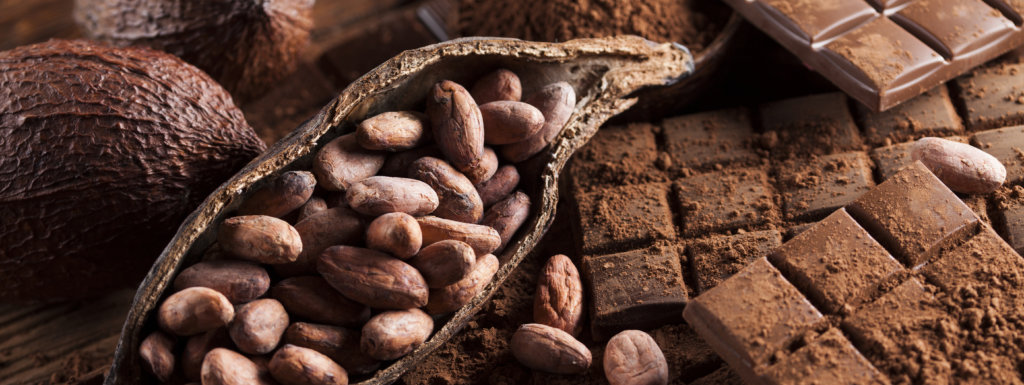
Schutter-Johnson Company
This Chicago-based company’s claim to fame was the introduction of Bit O’ Honey in 1924, a honey-flavored taffy product with bits of almond embedded throughout. Like taffy from other candy makers, Bit O’Honey was a long-chewing candy. The brand is now owned by Pearson’s Candy Company of St. Paul, Minnesota.
Want to try it? A one-pound bag goes quickly – purchase Bit O’Honey on Amazon. As an Amazon Associate, we earn from qualifying purchases.
Ferrara Pan
Founded in 1908 in the Little Italy neighborhood, the candy maker Ferrara is known for a wide range of candies, including Lemonheads, Jujyfruits, Chuckles, Atomic Fireballs, Red Hots and Boston Baked Beans. Today, Ferrara Candy has its headquarters in suburban Oak Brook Terrace and operates five manufacturing facilities in the U.S. and Mexico. Ferrara also is the country’s largest producer of candy canes, the largest seller of conversation hearts (“Kiss Me,” “Miss You,) etc. and produces a large portion of jelly beans that are consumed in the U.S.
Ever tried Red Hots? Lemonheads? Boston Baked Beans? As an Amazon Associate, we earn from qualifying purchases.
Brach’s
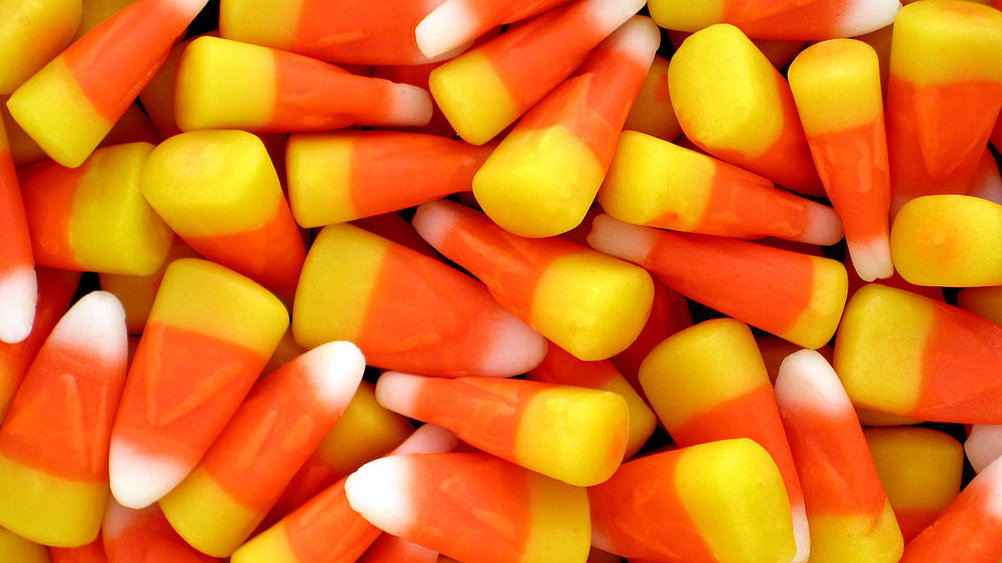
In 1904, Emil J. Brach opened “Brach’s Palace of Sweets” on North Avenue near Halsted and, at the time, sold mainly chocolate bars and an almond nougat confection. After World War II, the candy maker company began to focus on bulk and bagged candies and one time had more than 1,700 product lines. Brach’s Candy Corn has been a staple at Halloween and for many years has been the number one selling candy corn product in the U.S. In 2012, after a number of acquisitions by other companies, Brach’s became part of the Ferrara Pan Candy Company.
Stock up on Candy Corn for Halloween! As an Amazon Associate, we earn from qualifying purchases.
Curtiss Candy Company
Though no longer headquartered in the Chicago area (Nestlé is currently the owner), the company’s two most famous products are manufactured in Franklin Park (near O’Hare) — Baby Ruth (1920) and Butterfinger (1936). Curtiss was founded in Chicago in 1916 by Otto Schnering who named the company using his mother’s maiden name because of anti-German sentiment during World War I.
Get your fix on Amazon – Baby Ruth and Butterfinger. As an Amazon Associate, we earn from qualifying purchases.
DeMet’s Candy Company
Turtles brand candy was developed by Johnson’s Candy Company in 1918 when a traveling salesman showed a candy to one of the dippers that looked like a turtle. It was made with pecans and caramels and then dipped in chocolate. In 1923, the candy maker’s stores dropped the Johnson’s name and assumed the name DeMet’s and reserved the trademarked Turtles name. Now owned by Yildiz Holding, the products are sold at a wide variety of retail stores, including Walgreens, CVS, Target and Amazon – purchase here! As an Amazon Associate, we earn from qualifying purchases.
Tootsie Roll Industries
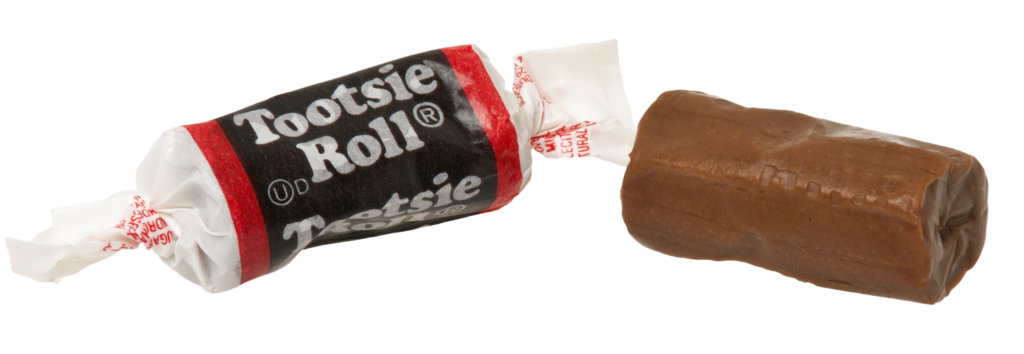
Founded in New York in 1898, Tootsie Roll Industries has had its candy maker headquarters and primary manufacturing facilities in Chicago since 1968. The company’s eponymous product, the Tootsie Roll, derived its name from owner Leo Hirshfield’s daughter, whose nickname was “Tootsie.” Additional treats are added to the product line or acquired over the years: Tootsie Pops (1931); DOTS (1972); Junior Mints, Sugar Daddy, Sugar Babies and Charleston Chew (1994); and Dubble Bubble (2004).
Easy access to a chocolate fix here. As an Amazon Associate, we earn from qualifying purchases.
Leaf Brands
Founded in 1920 by Chicago entrepreneur Sol Leaf, Leaf Candy Company was once the fourth largest candy company in North America, producing such products as Whoppers, Jolly Rancher, Milk Duds, Payday and Heath Bar (As an Amazon Associate, we earn from qualifying purchases). The company’s U.S. division was sold to Hershey in 1996 and the remainder of the company left the U.S. for Europe. Today the company has been re-launched in the U.S. and it is selling a variety of food products, such as Hydrox cookies.
Fannie May
The first Fannie May candy shop was opened at 11 N. LaSalle St. in 1920 by H. Teller Archibald, a prominent Chicago racehorse owner. The business was successful — by 1935 it has grown to 48 retail shops in Illinois and surrounding Midwest states. Key to the company’s success was its collection of decades-old candy recipes that, over the years, it refused to update or modernize. In 1946, Fannie May created “Pixies,” a blend of hand-poured caramel, roasted pecans and dark or milk chocolate. Pixies, its most popular product ever, helped propel Fannie May in 1992 to the position of largest candy retailer (most stores) in the United States. Today the company is part of Ferrara Candy.
The Hershey Company
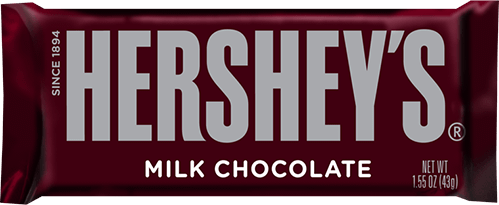
No, the Hershey Bar was not invented in Chicago. None of the company’s other products — Kisses, Syrup, Reese’s, Kit Kat, Almond Joy (to name a few) — were launched or manufactured here, either. The candy makers have a very important connection to Chicago, however. After Milton S. Hershey, founder of the company saw German chocolate-making machines for the very first time at the 1893 World’s Columbian Exposition in Chicago, he decided he wanted to go into the chocolate manufacturing business. He purchased the machines and the rest, as they say, is history.
Mars, Inc.
Though not founded in Chicago, Mars, Inc. had its corporate headquarters here for 30 years (1929-1959) and during that period launched some of its most popular candy products, including Snickers, Three Musketeers and M&M’s (As an Amazon Associate, we earn from qualifying purchases). Now headquartered in suburban Washington, D.C. and still owned by members of the Mars family, the company still maintains manufacturing operations in Chicago and has grown to become one of the largest privately-held companies in the world.
Marshall Field & Co.
Originally created at a Seattle-based department store chain, Frederick and Nelson’s, in 1918, the recipe for Frango Mints became the property of Marshall Field & Company stores in Chicago when it acquired the Washington company. In 1929, Field’s moved production of Frango Mints to the 13th floor of its enormous State Street flagship store where they were produced in huge melting pots for nearly 70 years. Now owned by Macy’s department stores, Frango Mints are available in a wide variety of flavors and in different product lines. The products, however, are now manufactured in Ohio.
Buy Frangos on Amazon. As an Amazon Associate, we earn from qualifying purchases
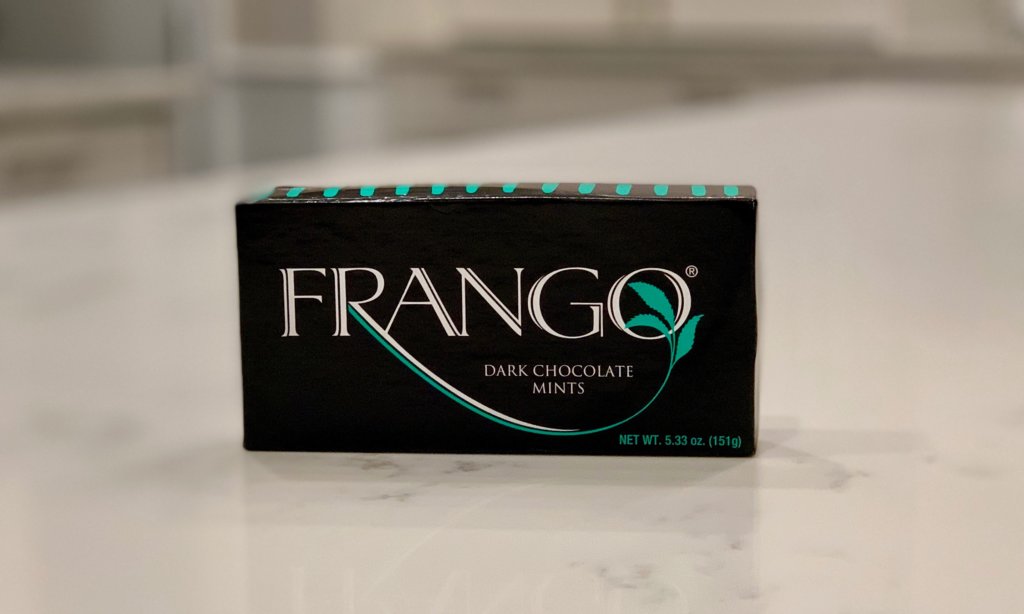
Interested in learning more? For more stories about Chicago’s fascinating history, take a look at what Chicago city tours we are currently running with L Stop Tours! You can see some of these candy factories and businesses while on one of our many Chicago tours. Book your next adventure today!
Holder of two journalism degrees, including a masters from Northwestern University, Tom Schaffner is a native of the Chicago area and has spent nearly 50 years as a writer, editor, publisher and professional communications consultant. He was also the founder, editor, and publisher of the Chicago File, a newsletter for former Chicagoans. Tom is also the co-owner of L Stop Tours.

